After three mornings of sunshine in Tiberias, today I woke up at 6am to a cold and rainy morning on the Sea of Galilee. There were no fried eggs for breakfast this morning as everything was prepared yesterday because we are in the middle of Shabbat.
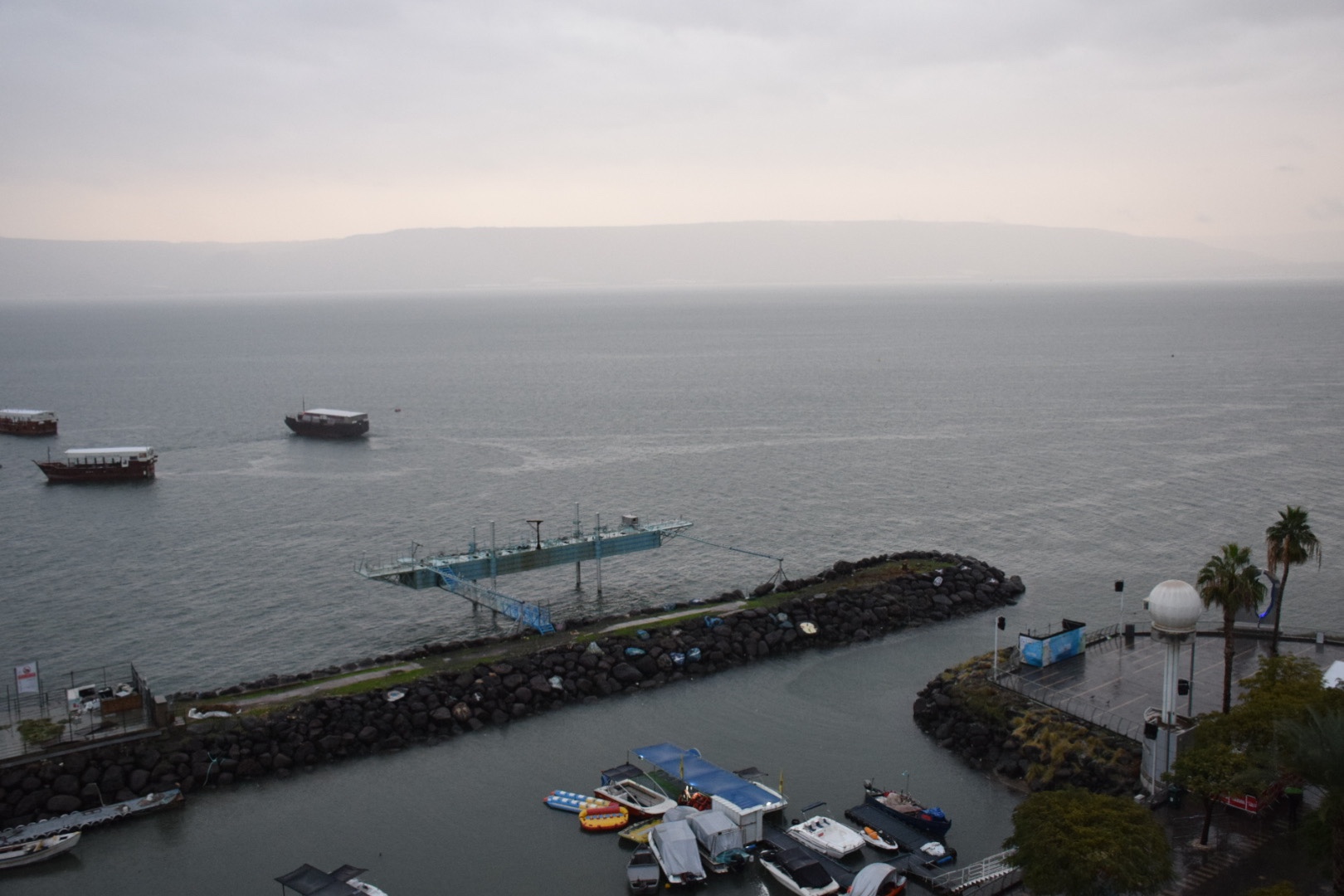
We boarded the bus at 7:45am to leave the Leonardo Plaza hotel for our new one-night home near the Dead Sea. Even though it was raining in Tiberias Dr Cloud said that it should be dry around the Dead Sea. He joked that in all his trips to the Dead Sea the only cloud he’s ever seen is when he looks in the mirror at the Dead Sea Hotel. It rains less than 1/2 inch per year at the Dead Sea. Dr Cloud predicted that we would run out of the rain within an hour.
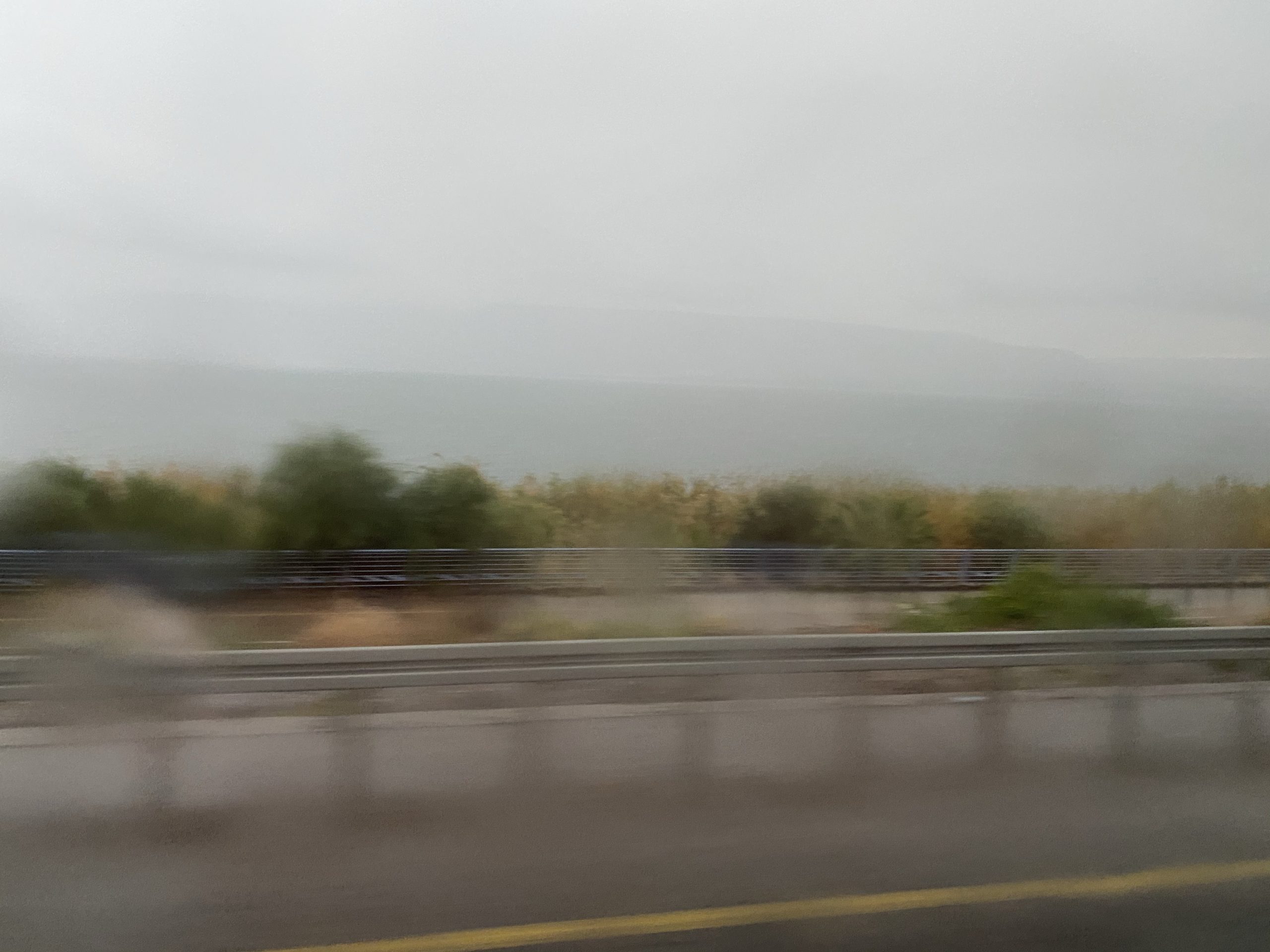
We drove along the Sea of Galilee south and it was so cloudy, and raining so hard, that you couldn’t see to the other side. While leaving Tiberias, Dr Cloud led us in a prayer for our journey. After leaving the Sea of Galilee we continued heading south along the Jordan River.
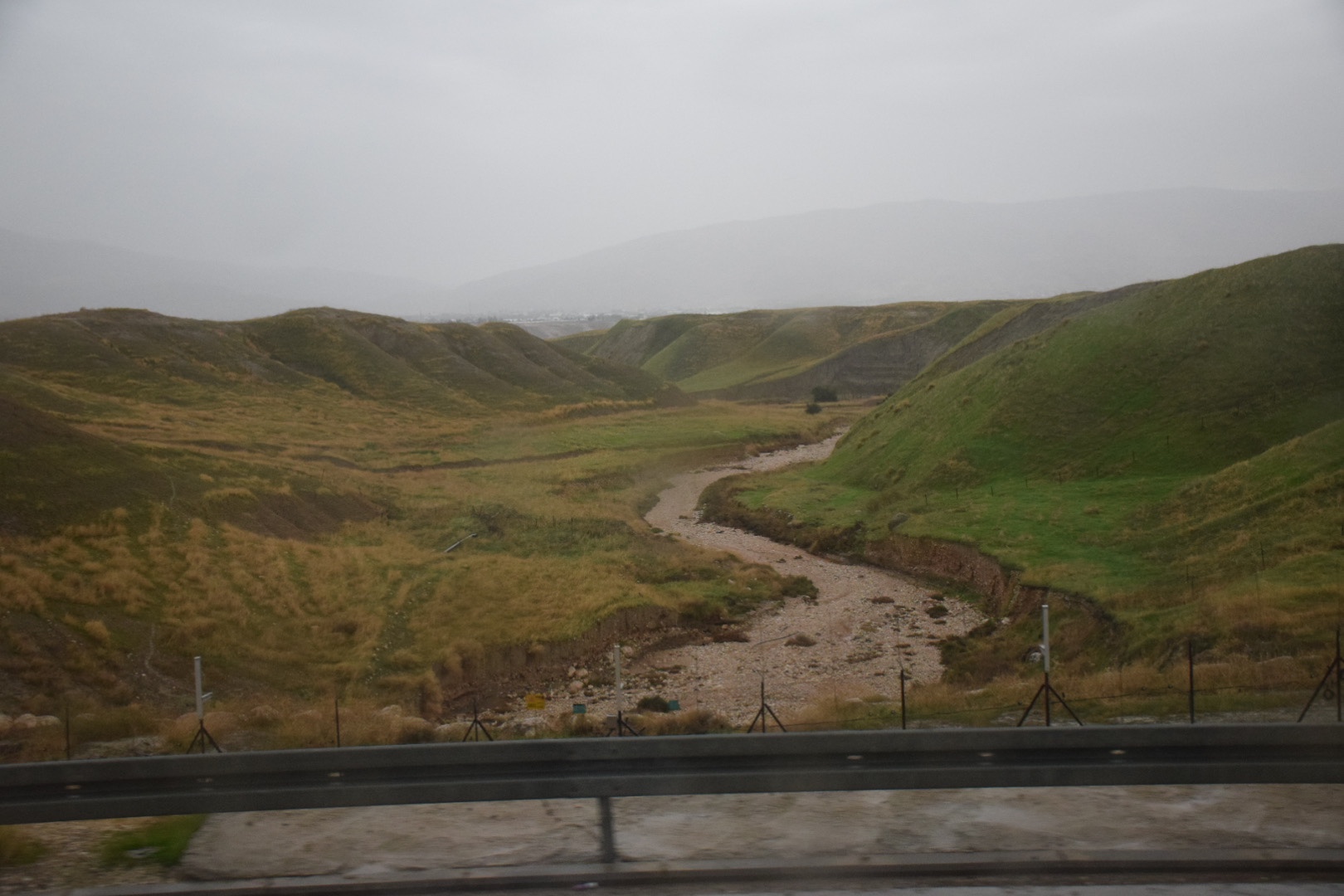
The Jordan Valley is quite lush and beautiful to the north, but it was hard to take pictures with the rain.
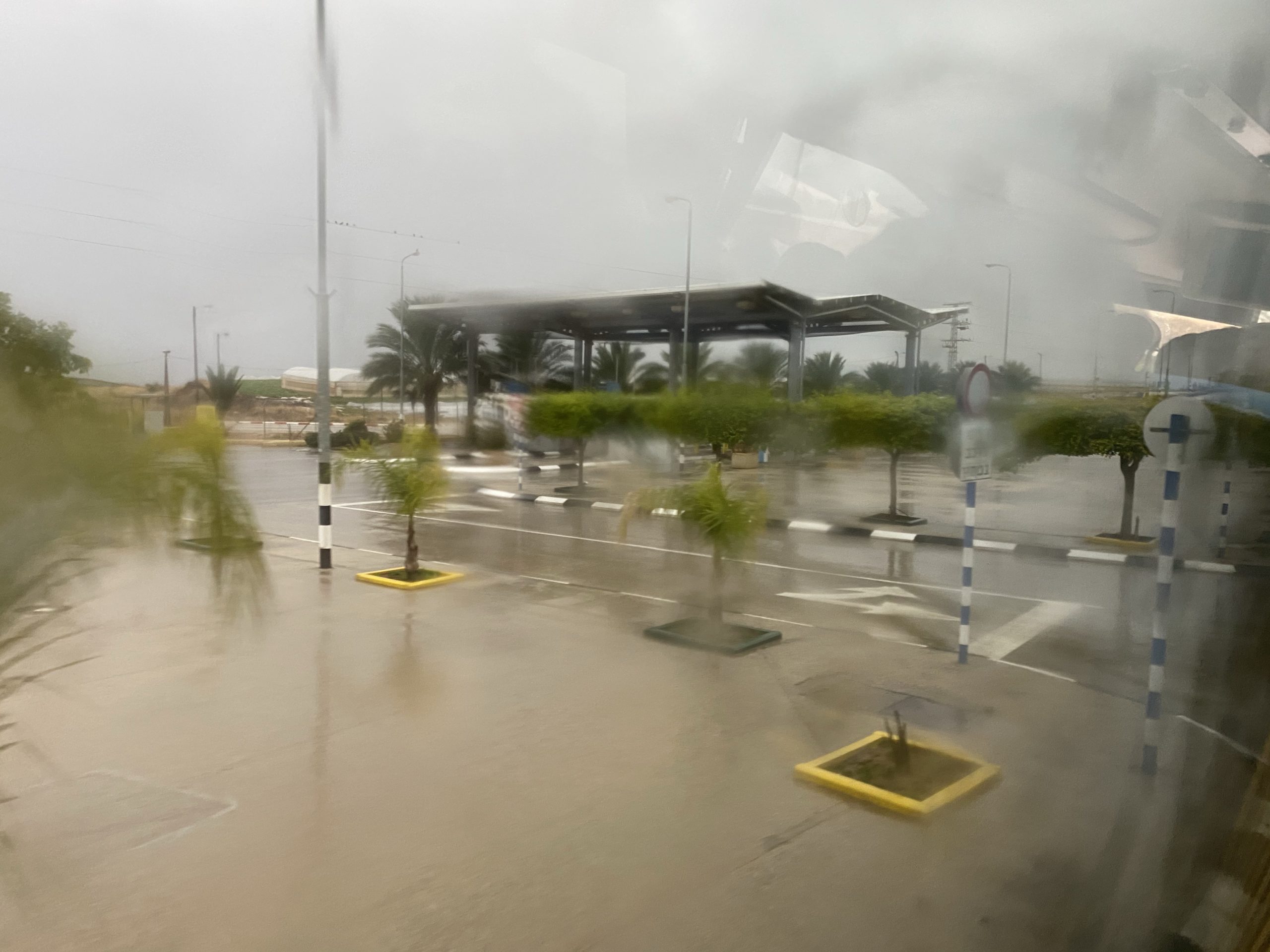
Murad told us that within 30 minutes we would reach a checkpoint for the West Bank. The West Bank is under Palestinian control. He used this as an opportunity to share with us the history of the Israeli and Palestinian conflict. Murad explained that both sides use archaeology to make their claim on the land. During this discussion, he explained to us that the name “West Bank” comes from the Jordanians and is referencing the western bank of the Jordan River. The West Bank area includes the Biblical cities of Bethlehem and Jericho and is approximately 5,800 square miles in area. Murad said that the cities in the West Bank are filled with the very poor and the very rich. There is no middle class. There are also no public services because there is no state. The West Bank is surrounded by a wall that is over 700 km in length. All checkpoints are controlled by Israel.
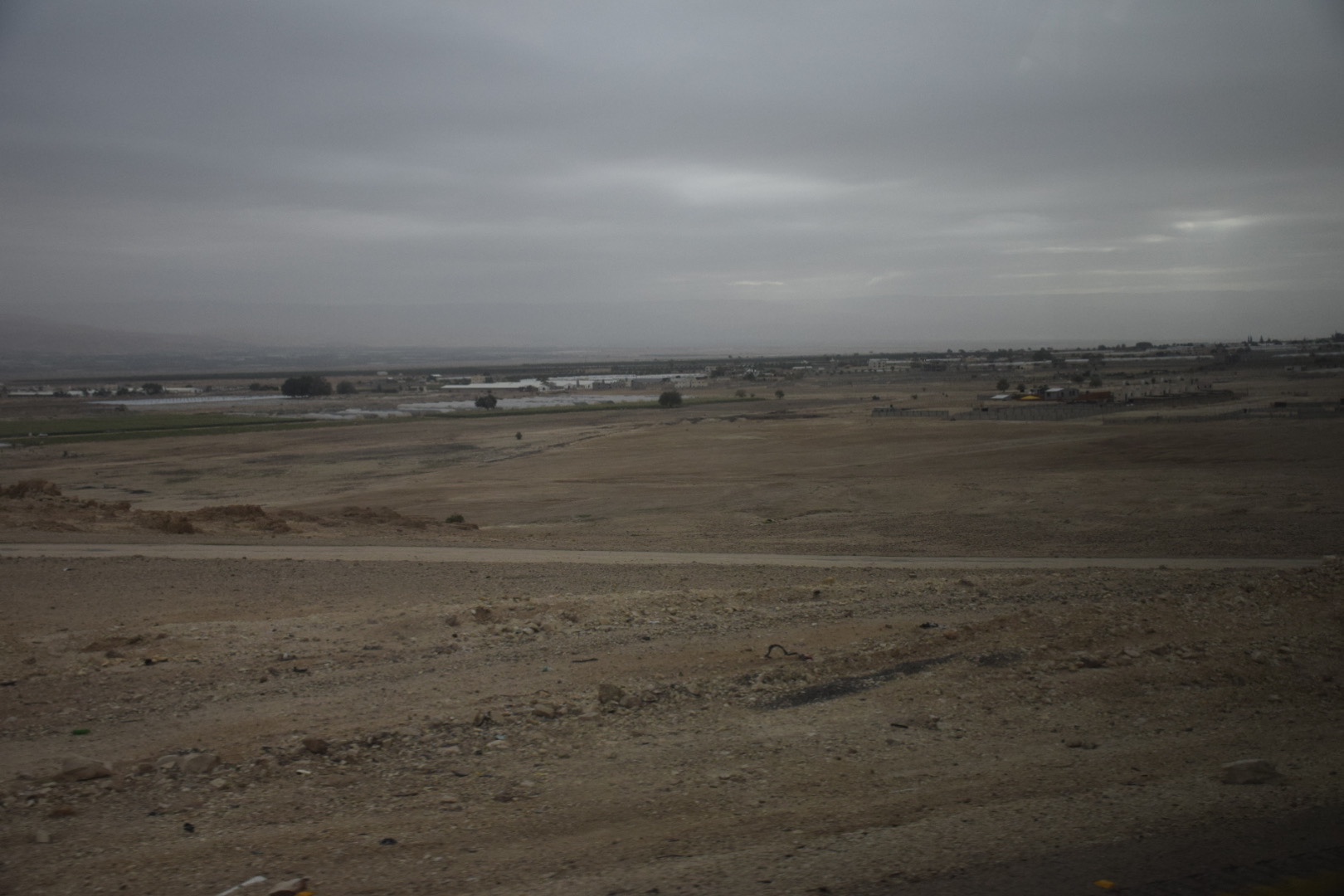
As we went further south. The rain slowly began to taper (we missed Dr Cloud’s prediction of 1 hour) and the terrain turned from a lush green landscape into desert.
Jericho

It took a couple of hours to reach the Arab city of Jericho, which is located approximately 10 miles northwest of the Dead Sea. The area contains a spring, ‘Ain es-Sultan, and is considered an oasis in the desert (thus, the biblical designation, “city of the palm trees,” Judg 3:13). Herod the Great built winter palaces in the ancient city of Jericho.
In Genesis through Joshua, “Jericho” is primarily used as a geographical marker. For example, phrases such as “opposite Jericho,” or “at Jericho” are found throughout the Bible. The book of Numbers uses the phrases frequently to designate the place of the second giving of the Law and the point where the Israelites will eventually cross the Jordan River (Num 22:1; 26:3).
Jericho is primarily known for its famous walls which “tumbled down” in Josh 6 at the blast of the horn and the sound of the Israelite battle cry. This was the first city defeated after the children of Israel entered the Promised Land. The campaign against Jericho created a reputation for the Israelites that became the standard by which subsequent campaigns would be described and measured. This memorial of God’s judgment is spoken of in the terms of “just as he had done to Jericho and its king” (Josh 8:2; 10:1, 28, 30).
Other occurrences of Jericho may be found in reference to a rebuilding of the site in the 10th century BC by Hiel the Bethelite (1 Kgs 16:34). The Bible also speaks of a prophetic guild located in Jericho (2 Kgs 2).
Two gospel stories are set in Jericho or its surroundings: the healing of the blind man and the story of Zacchaeus’ encounter with Jesus (Matt 20:29–34; Mark 10:46–52; Luke 18:35–43; 19:1–10). The author of Hebrews mentions the Old Testament conquest of Jericho in Heb 11:30.
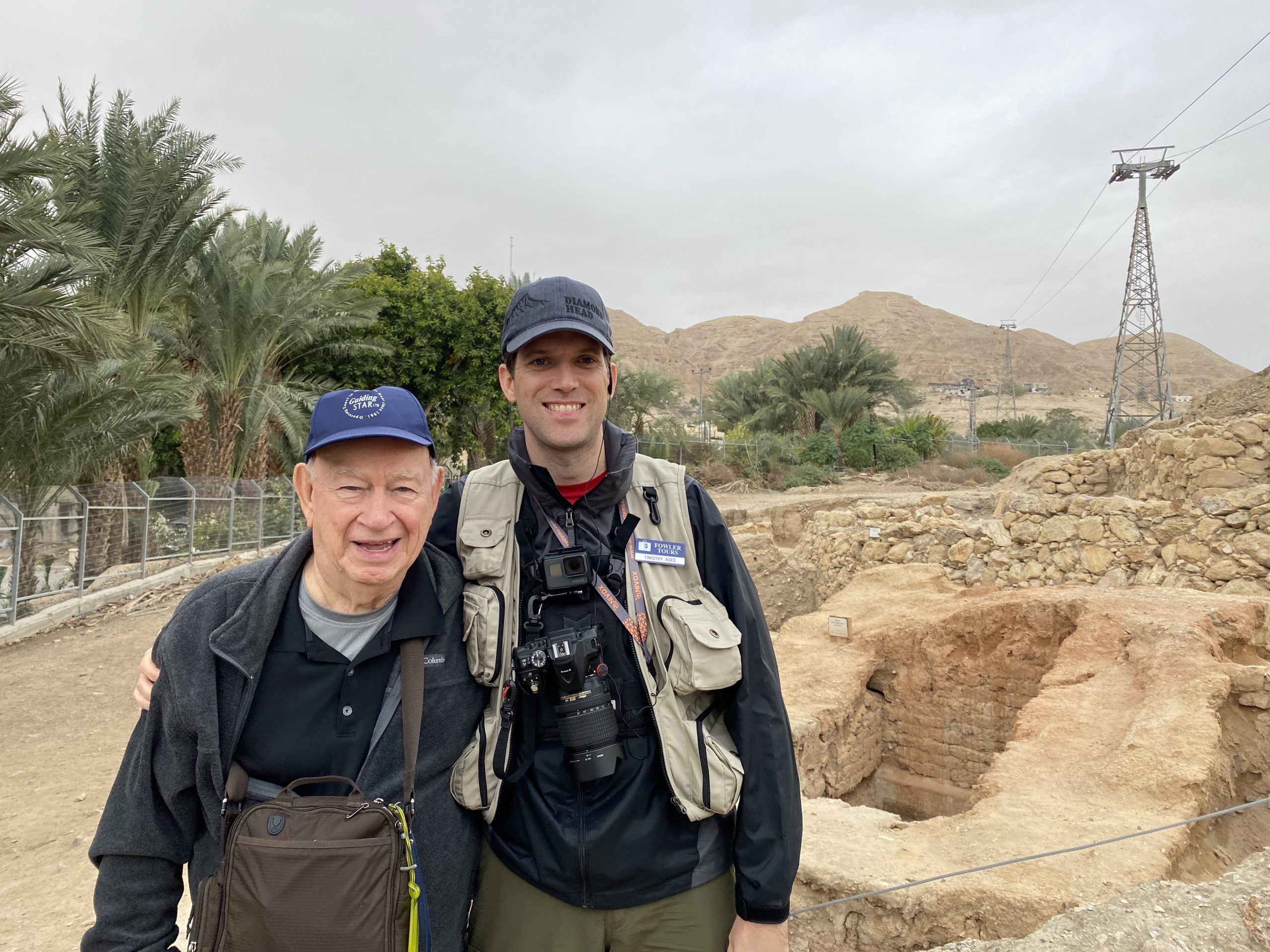
Our destination in Jericho was the ancient Tel known as Tell es-Sultan, which is located within the modern city. This Tel would have been the location of the city when Joshua led Israel against it in Josh 6, however no excavations have yet uncovered artifacts from that time period.
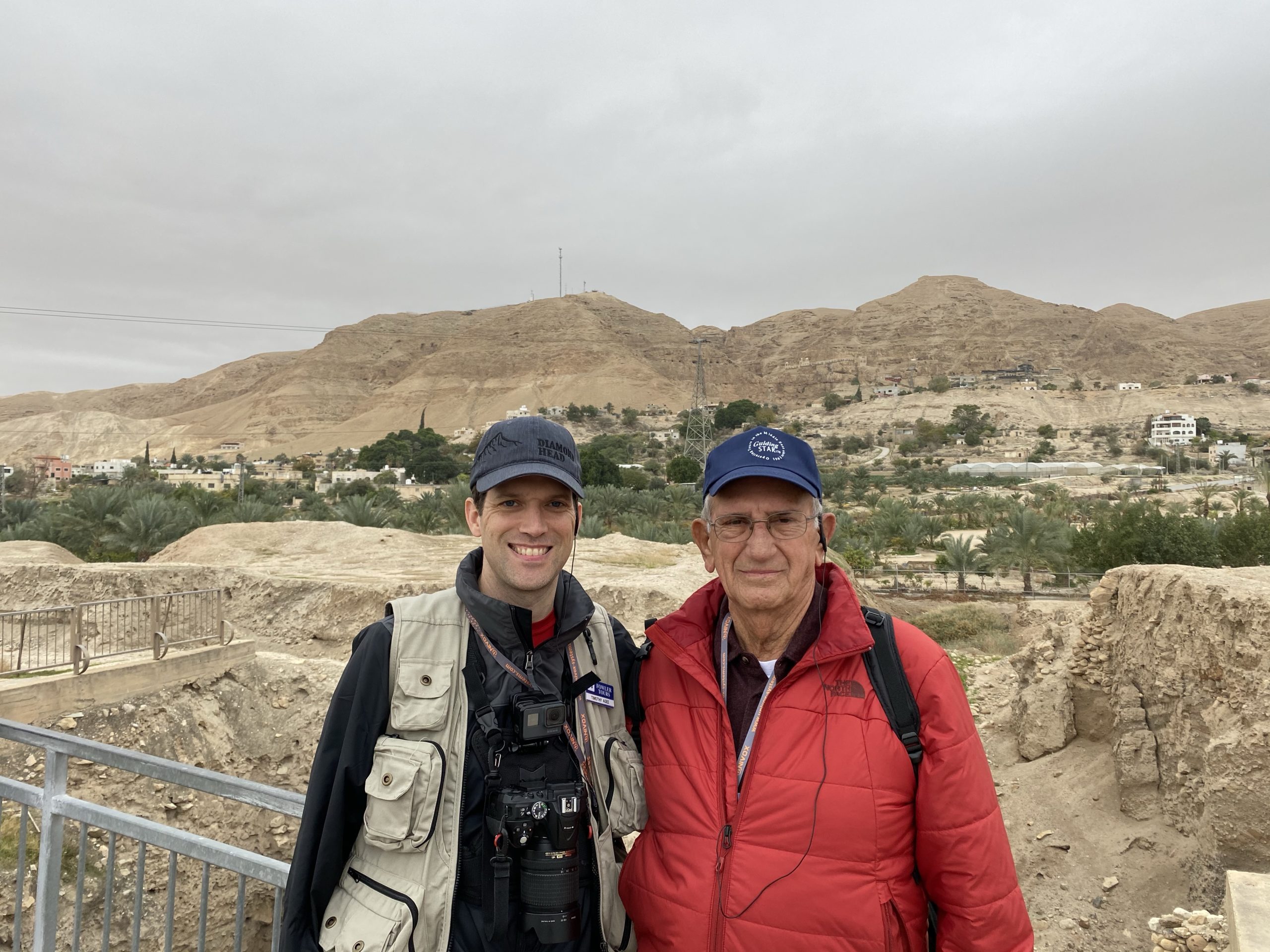
Upon arrival, Murad showed us a mountain in the distance known as the “Mount of Temptation,” and is the traditional location of the temptation of Jesus (Matt 4:1-11; Mark 1:12-13; Luke 4:1-14).
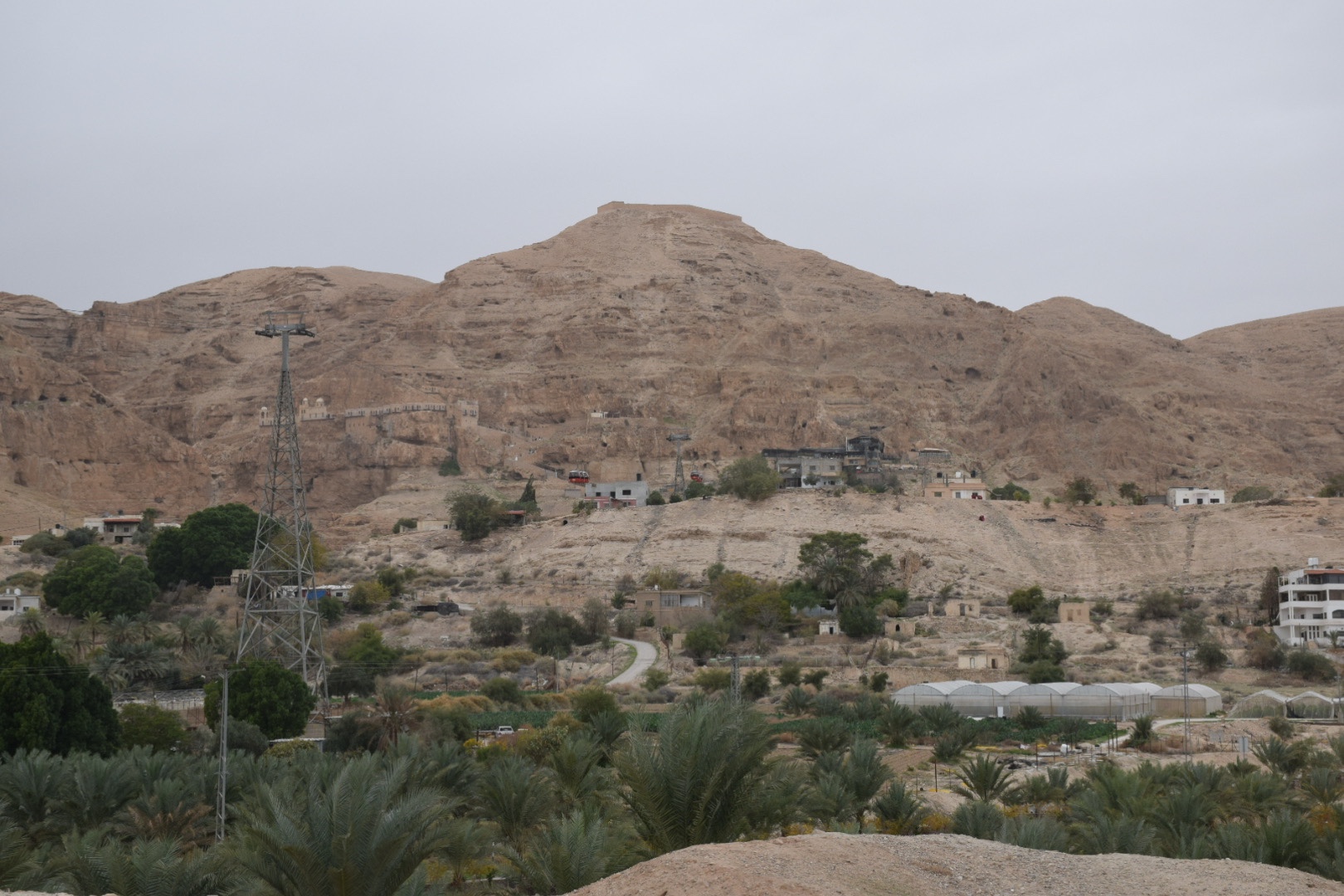
I later asked Dr. Cloud about the probability that this mountain is the actual “wilderness” where Jesus was tempted, and he said, “about 2%.”
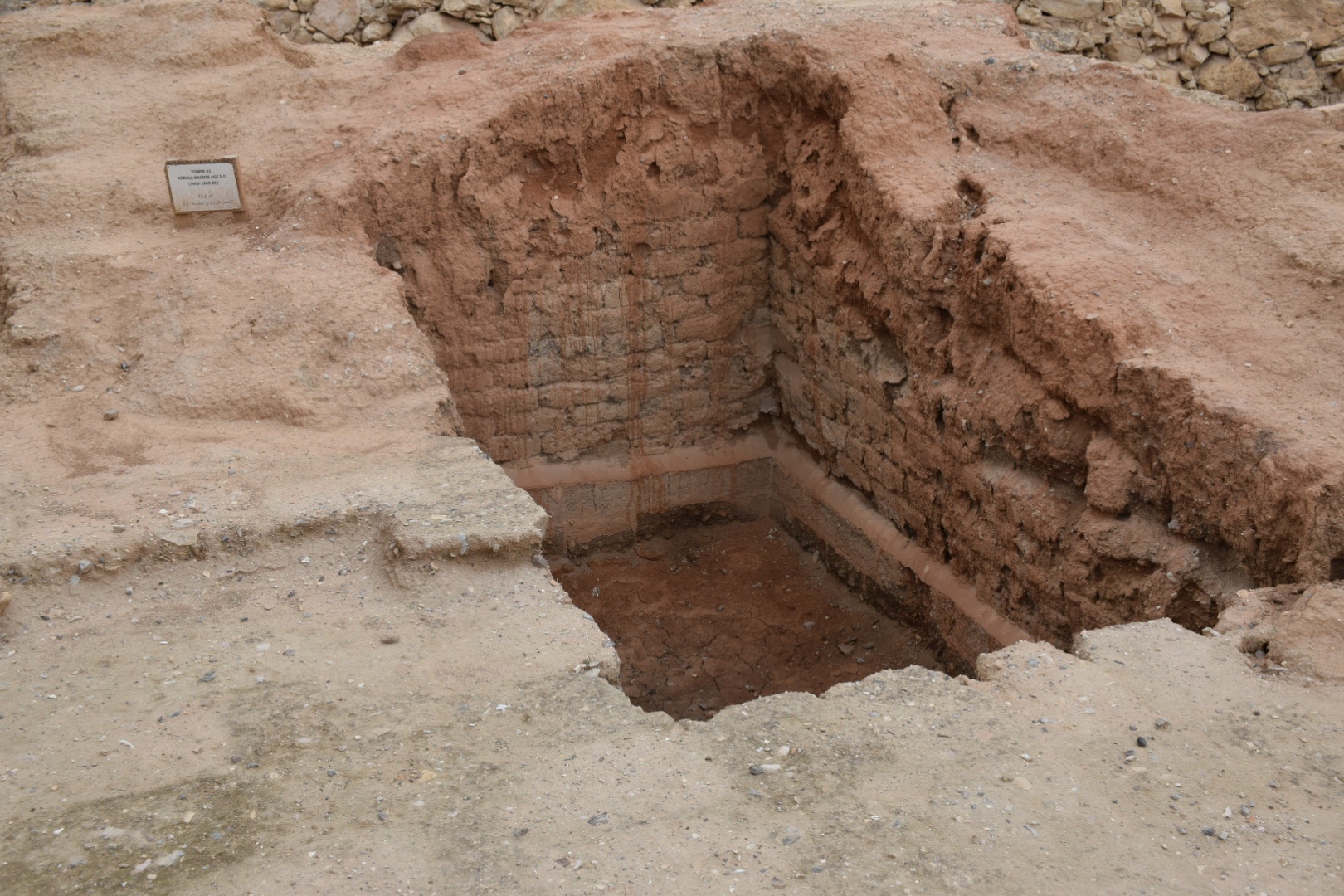
We saw a new excavation that includes a mud brick tower from 1950 to 1650 BC…
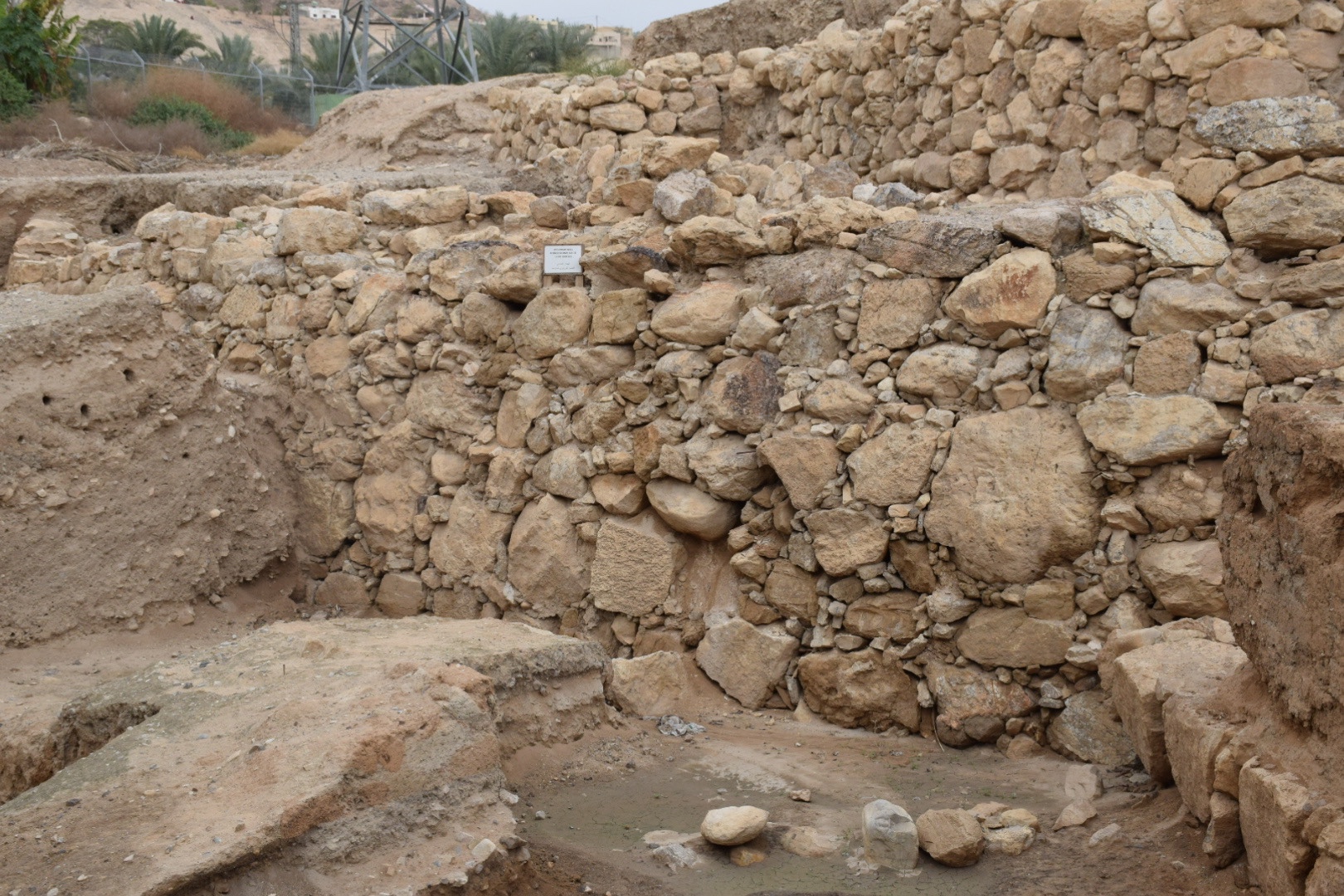
and a stone wall from 1650 to 1550 BC. Both of these would have been from before the time of Joshua. This tower and wall would have been under the walls that were destroyed by God.
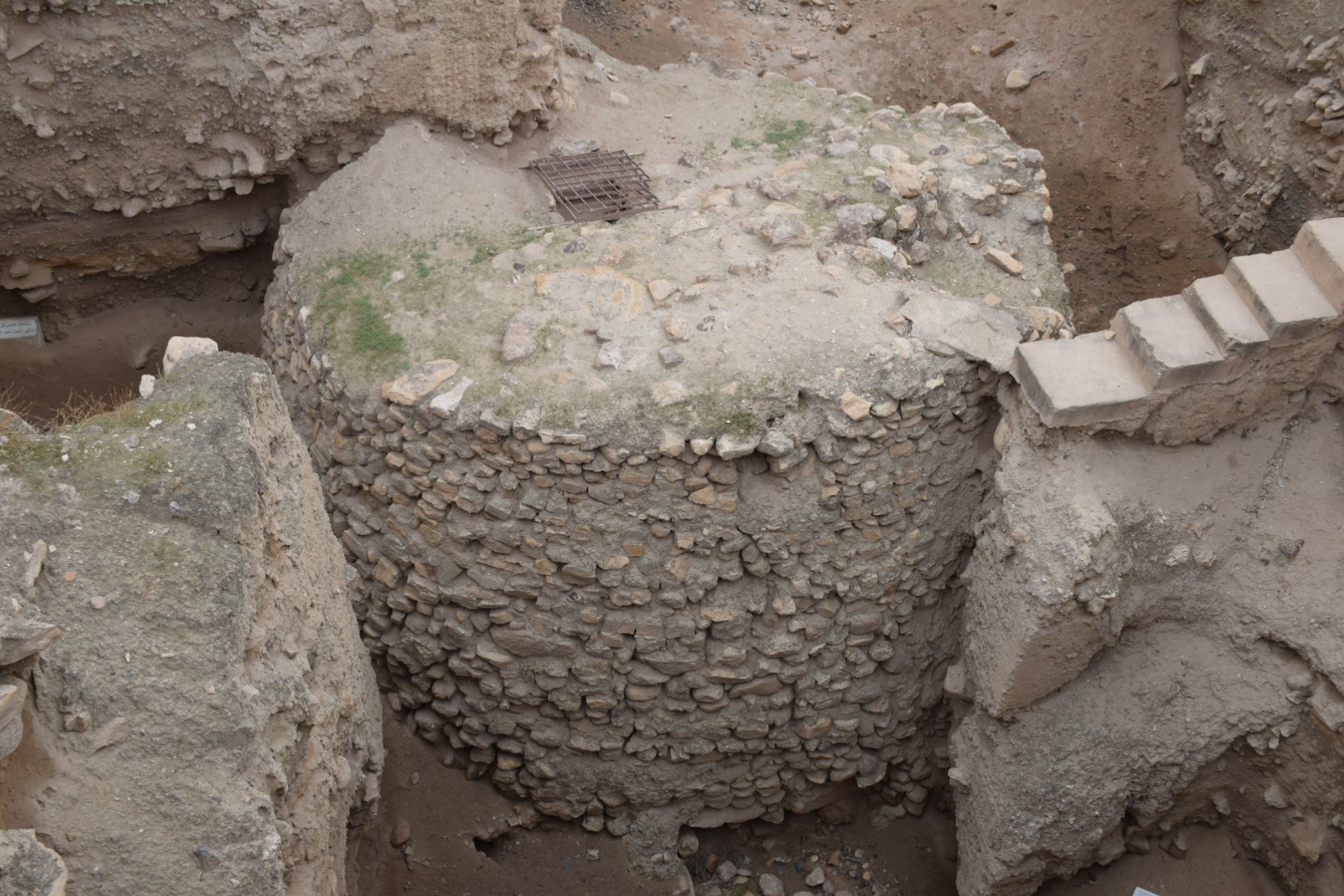
As we moved to the next area, Murad explained that the original excavations in Jericho were done by Kathleen Kenyon, and that she had been unable to find the walls from Joshua’s time (my belief is that this is because they were destroyed.) She did however find a large, round tower and walls that she dated to 9,500 BC. This has led to Jericho being designed as the “Oldest City in the World.” Whether or not you believe the world to be that old, this is still a pretty cool find, and the tower is amazingly intact.
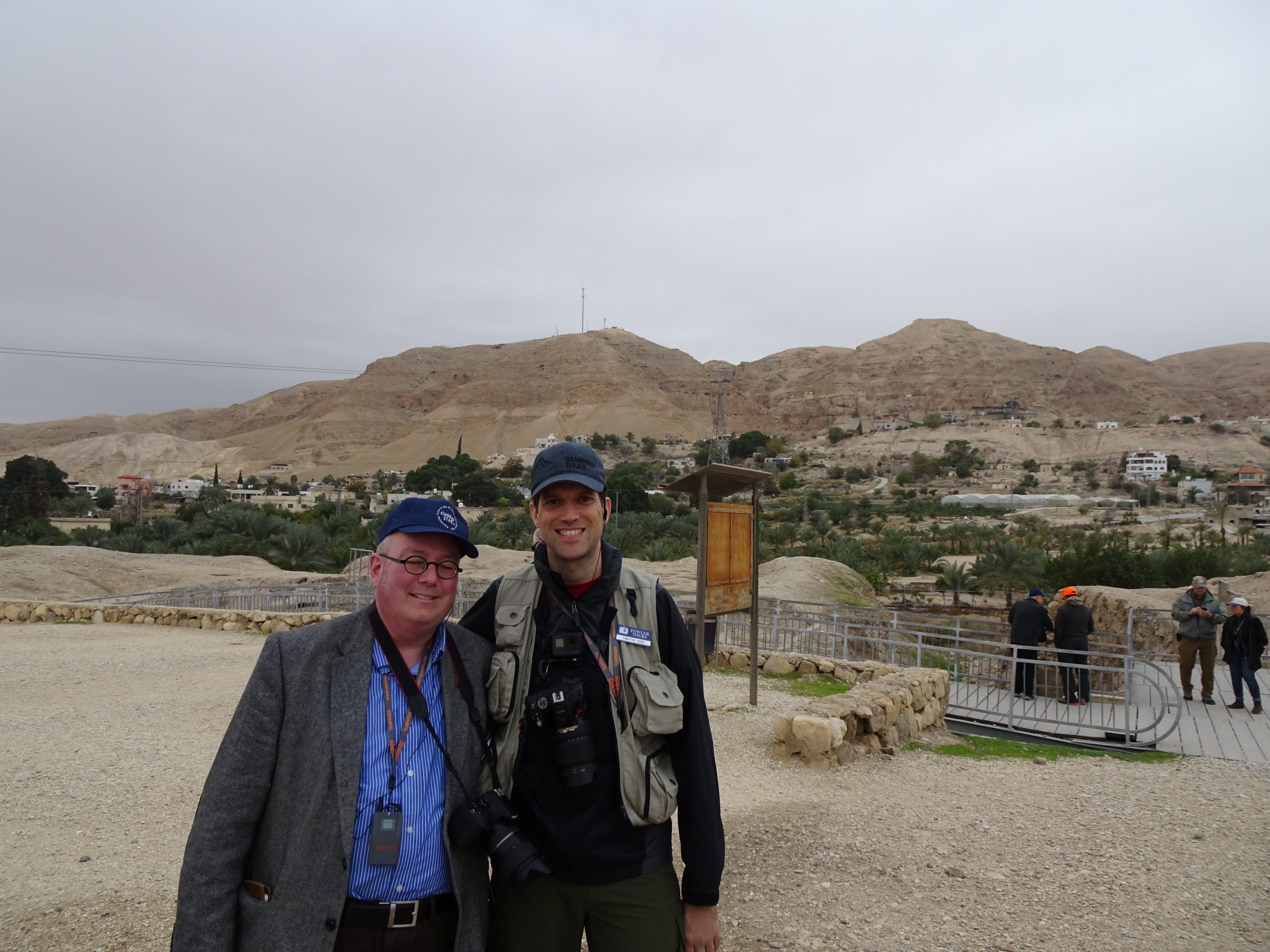
As we were getting ready to leave, my friend Greg Tidwell told me joke about Jericho. He said that a Sunday school teacher asked her class “Who knocked down the walls of Jericho?” One young boy said, “I promise I didn’t do it!” The teacher told the boy’s mother what he had said when she came to pick him up, and the mother replied, “if he said he didn’t do it, then he didn’t do it!” Exasperated, the teacher found the boy’s father, and told him what the boy and his wife had said. The father replied, “Fine! I’ll pay for it. How much do I owe you?”
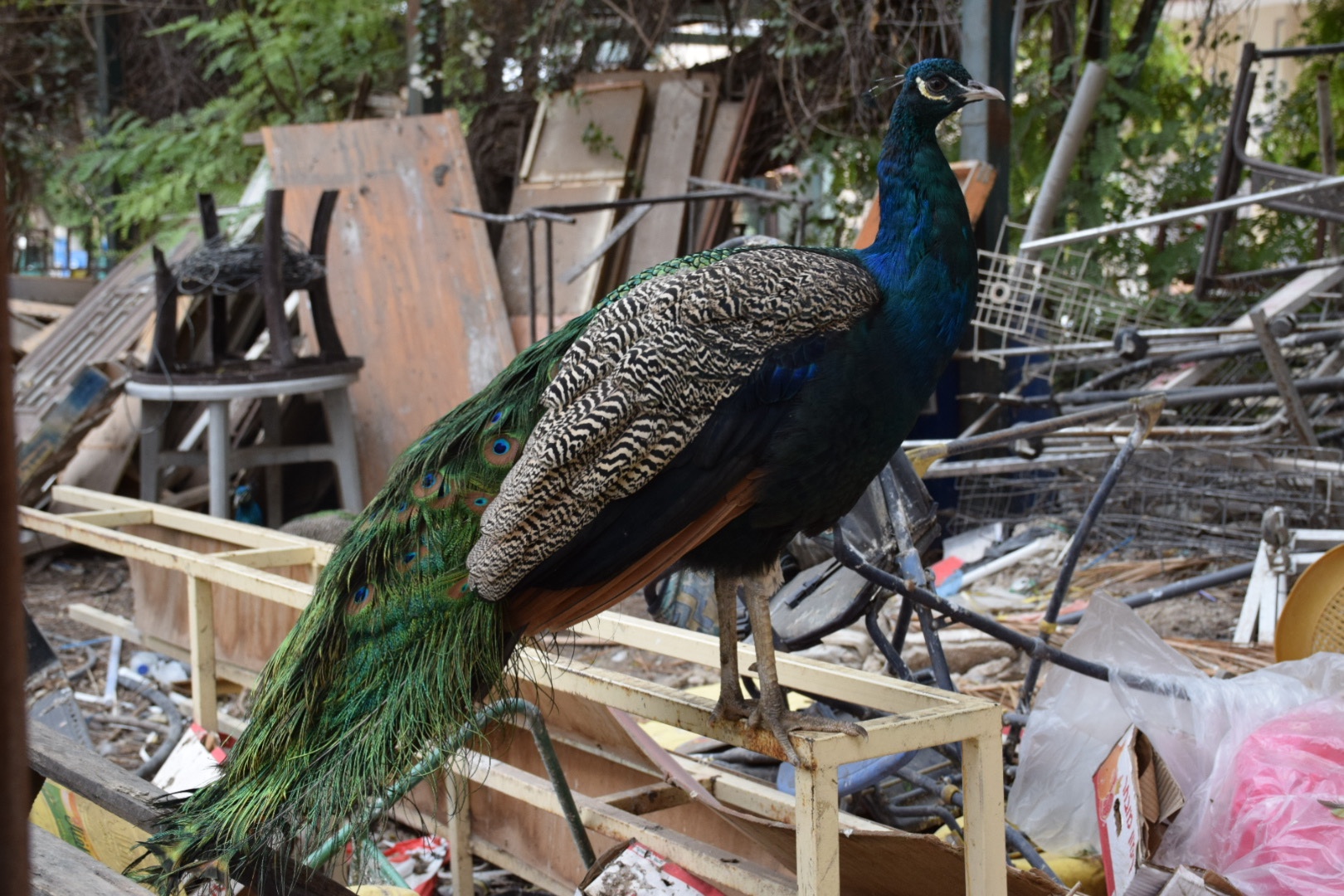
There were a bunch of peacocks in a nearby parking lot that I was able to photograph, and there were also a couple of men selling camel rides. Several members of our group took the opportunity to ride including…
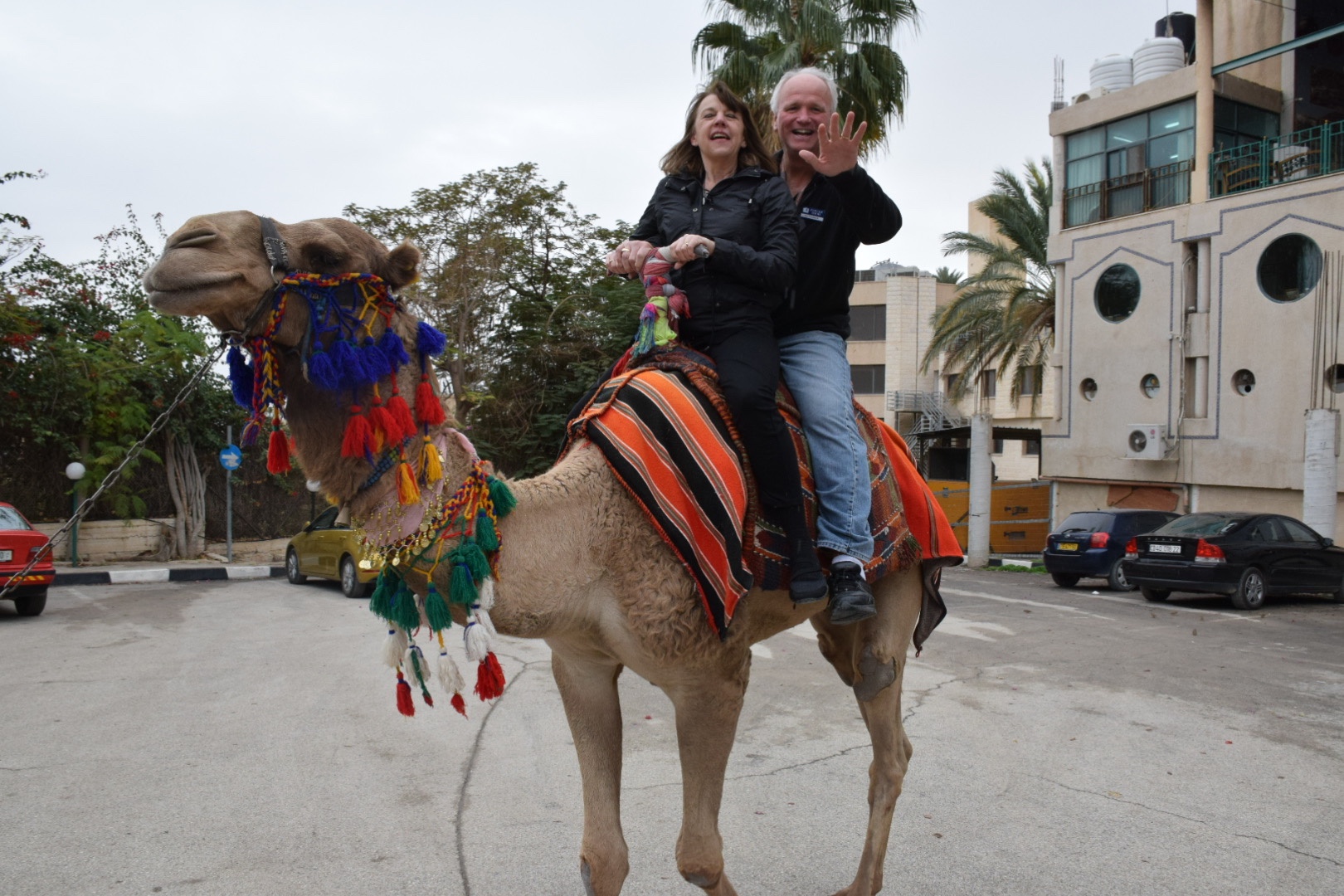
Keith and Sandra Parker,
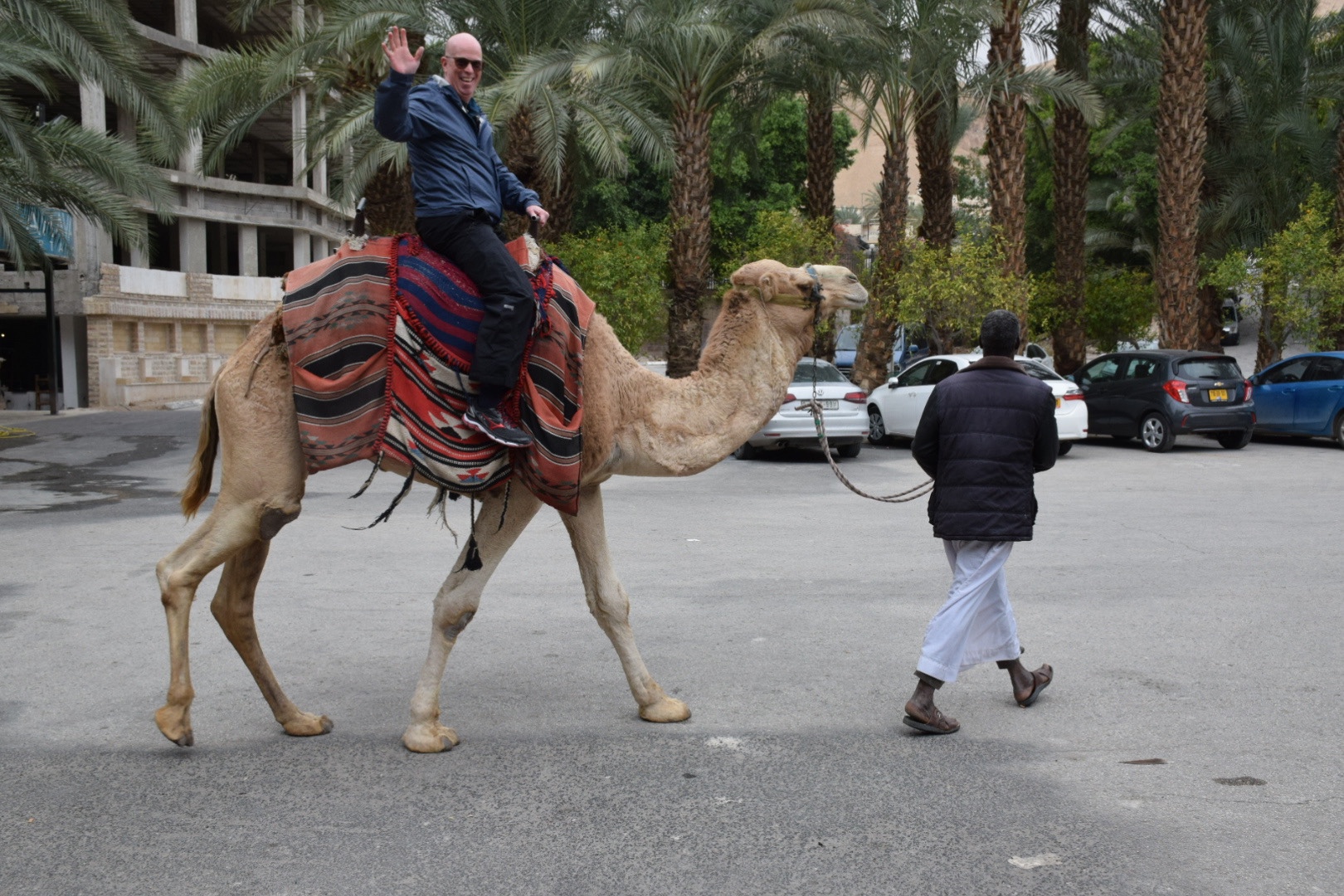
Kevin Collins (my former COBOL teacher), and
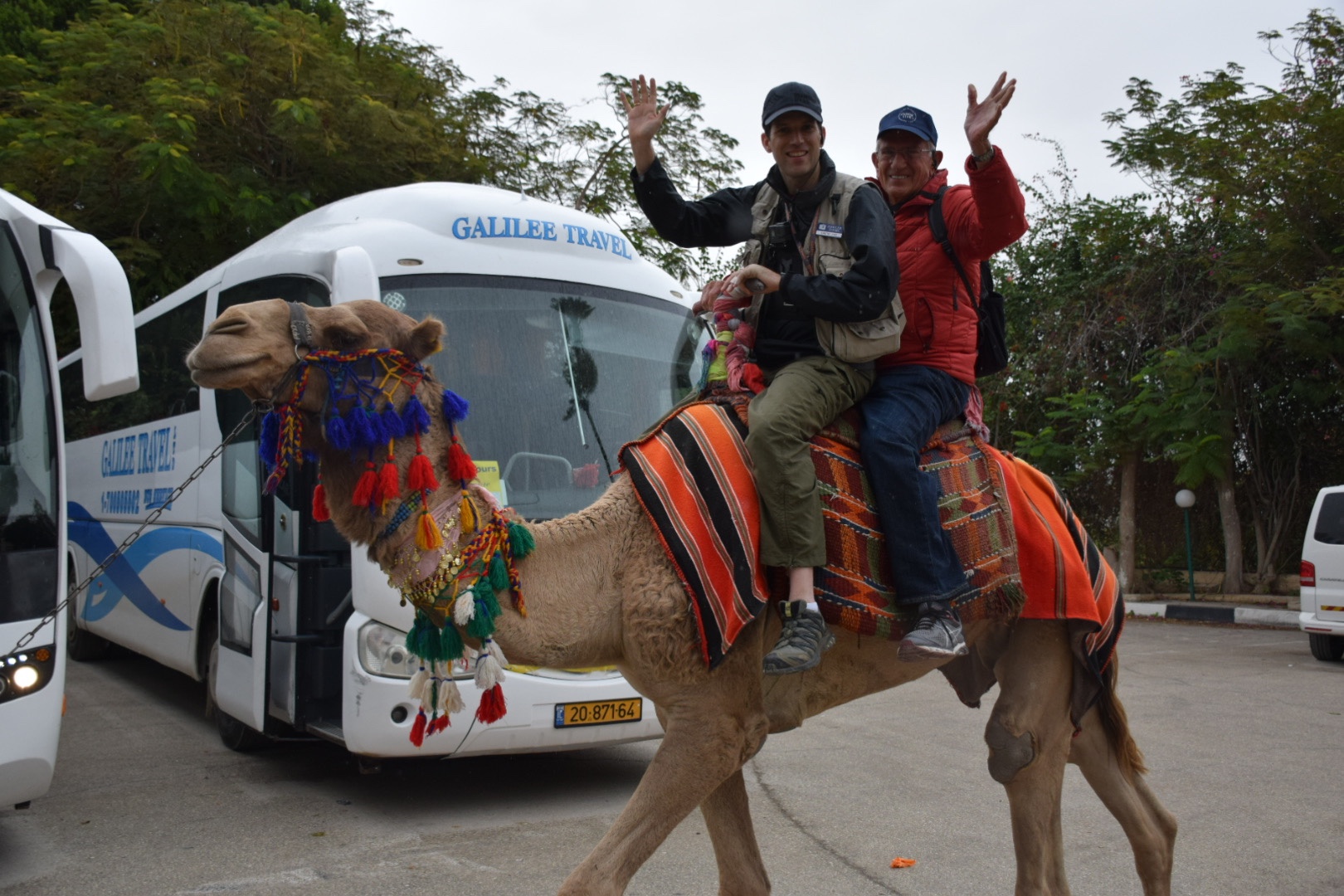
Even Daddy and I went for a ride! My dad’s laugh and smile while riding the camel were priceless. This was a lot of fun! I’ve ridden a camel before, but the camel was standing when I got on and off. This time, the camel got up and sat back down with us on him and that was quite an experience.
Qumran
It was approximately 15 to 20 mins to our next site through the wilderness of Judea, which was the area of John the Baptist’s preaching (Matt 3:1). Murad said that this was the smallest desert in the world. While driving, we quickly came up alongside the Dead Sea, and Murad gave us a few facts about this large salt lake. It is the lowest place in the world at 432 meters below sea level.
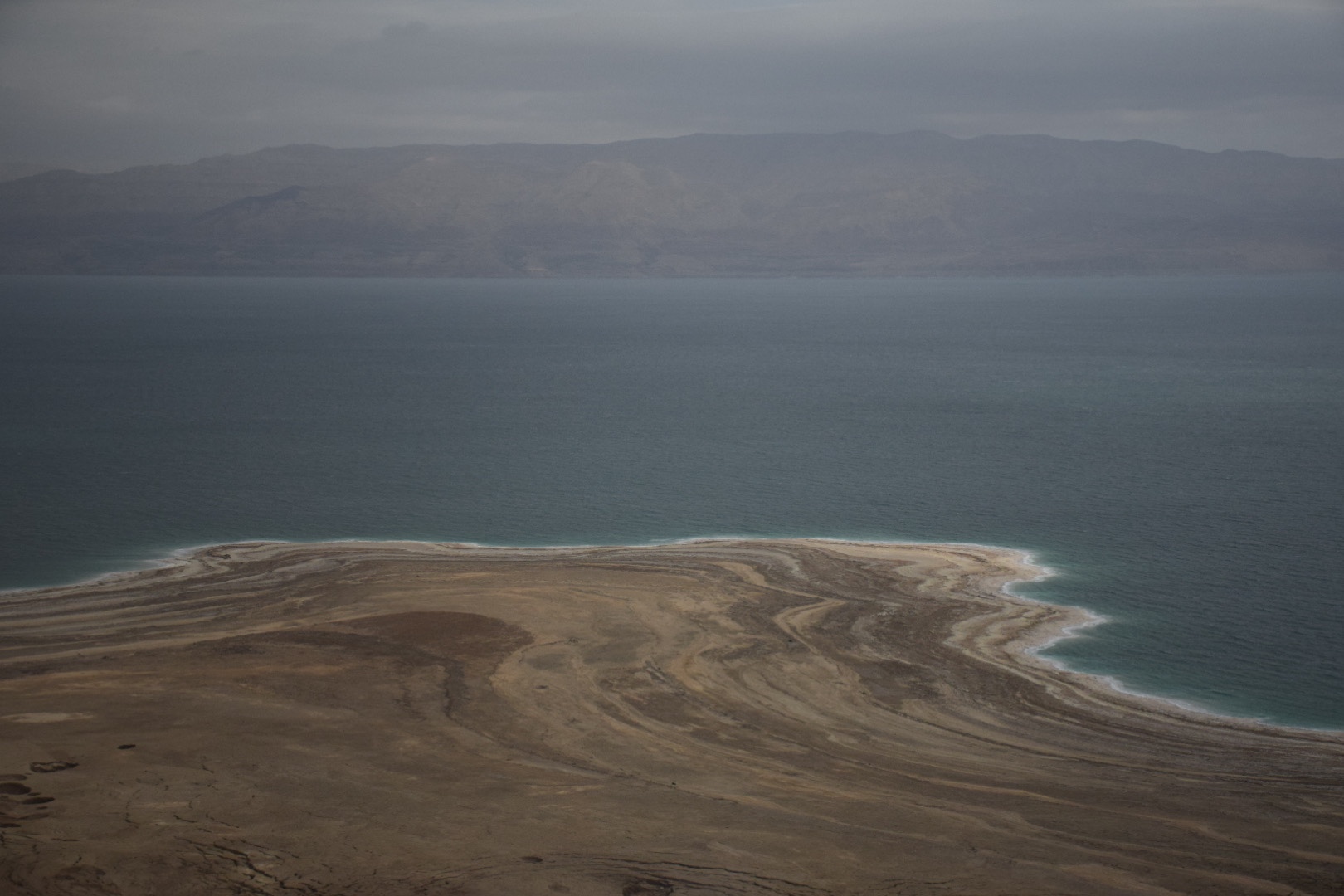
The water in the Dead Sea is 36% salt, 8 times more than any ocean. Needless to say, nothing can grow in this lake. It is 50 km long, 18 km wide, and 300 m deep. Murad said that it used to be much larger, but that since the flow of the Jordan River is now being controlled by a dam, the water in the Dead Sea is receding 1.5 meters every year.
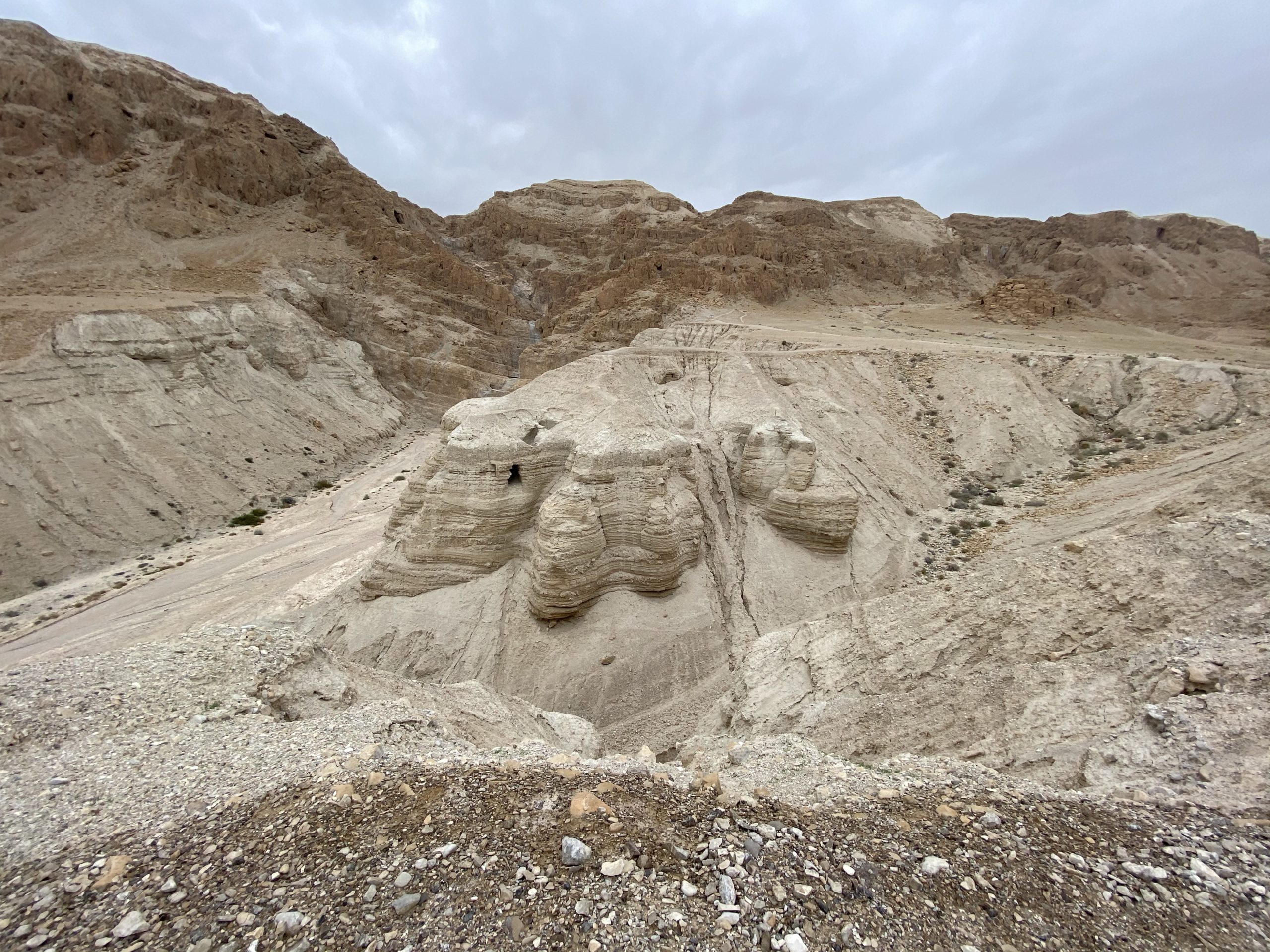
The next stop was at Qumran where the Dead Sea Scrolls were found beginning in 1947. Qumran was home of the Essenes during the time of Jesus, who were one of the three Jewish sects identified by Josephus. When we got out of the bus at Qumran, It was quite cold and windy. The site itself is stunning to see with beautiful cliffs filled with caves right next to the Dead Sea.
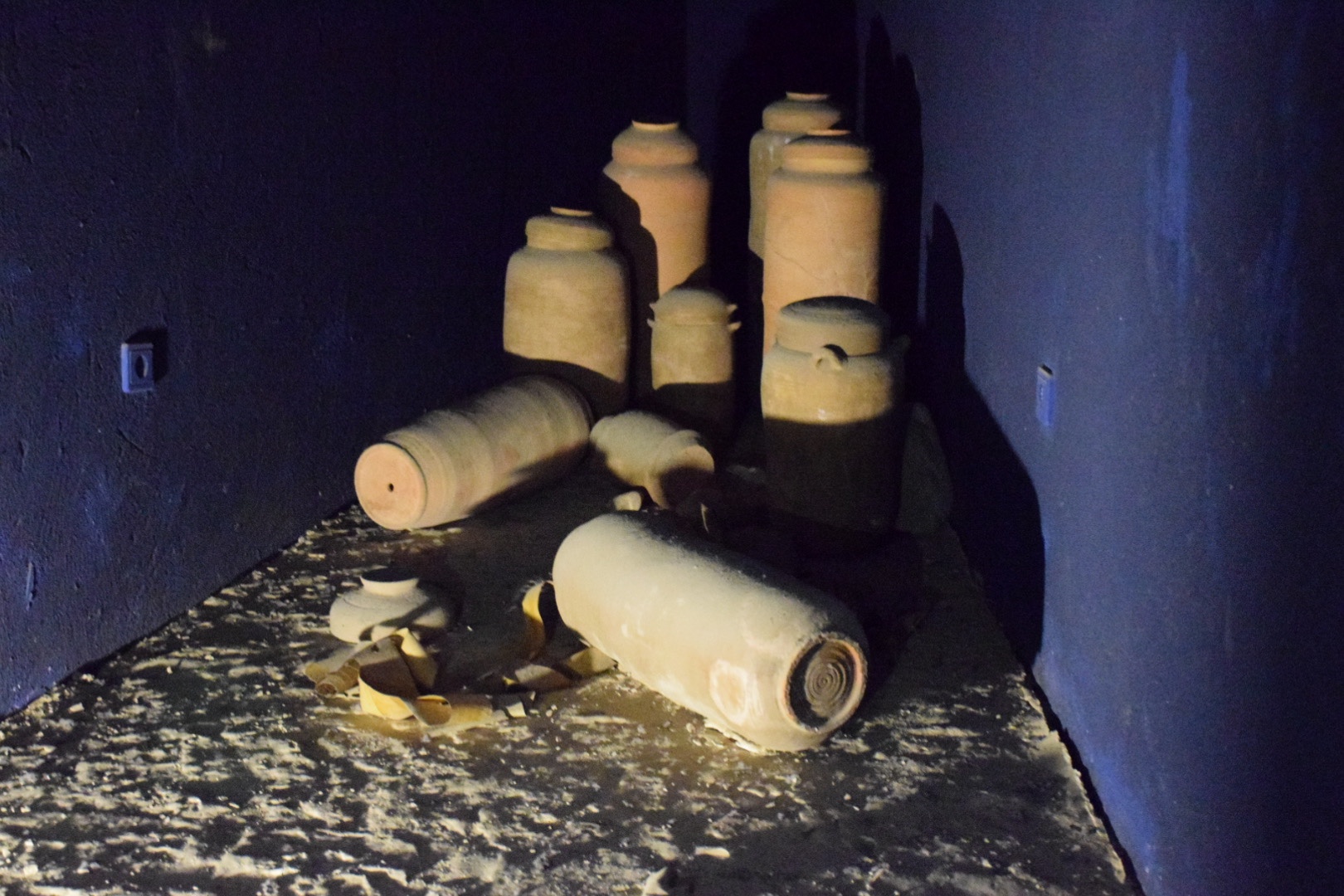
Upon arrival, we watched a short movie that tried to say that John the Baptist was a member of the Essenes (very unlikely), and then we walked through the small museum on site. In the museum they have replicas of the original jars that were found and of the Dead Sea Scrolls themselves. Murad explained that Qumran is one of the most important archaeological sites, because the Dead Sea Scrolls contain fragments from the time of Jesus and they include representations from all books of the Old Testament except for Esther, including the entire book of Isaiah (Dr Cloud commented later that he does not believe Nehemiah is actually represented in the Dead Sea Scrolls). This proves that the Old Testament we have today is essentially the same as what Jesus had during his time. Dr. Cloud even commented that the wordings / translation are very similar to what we have today.
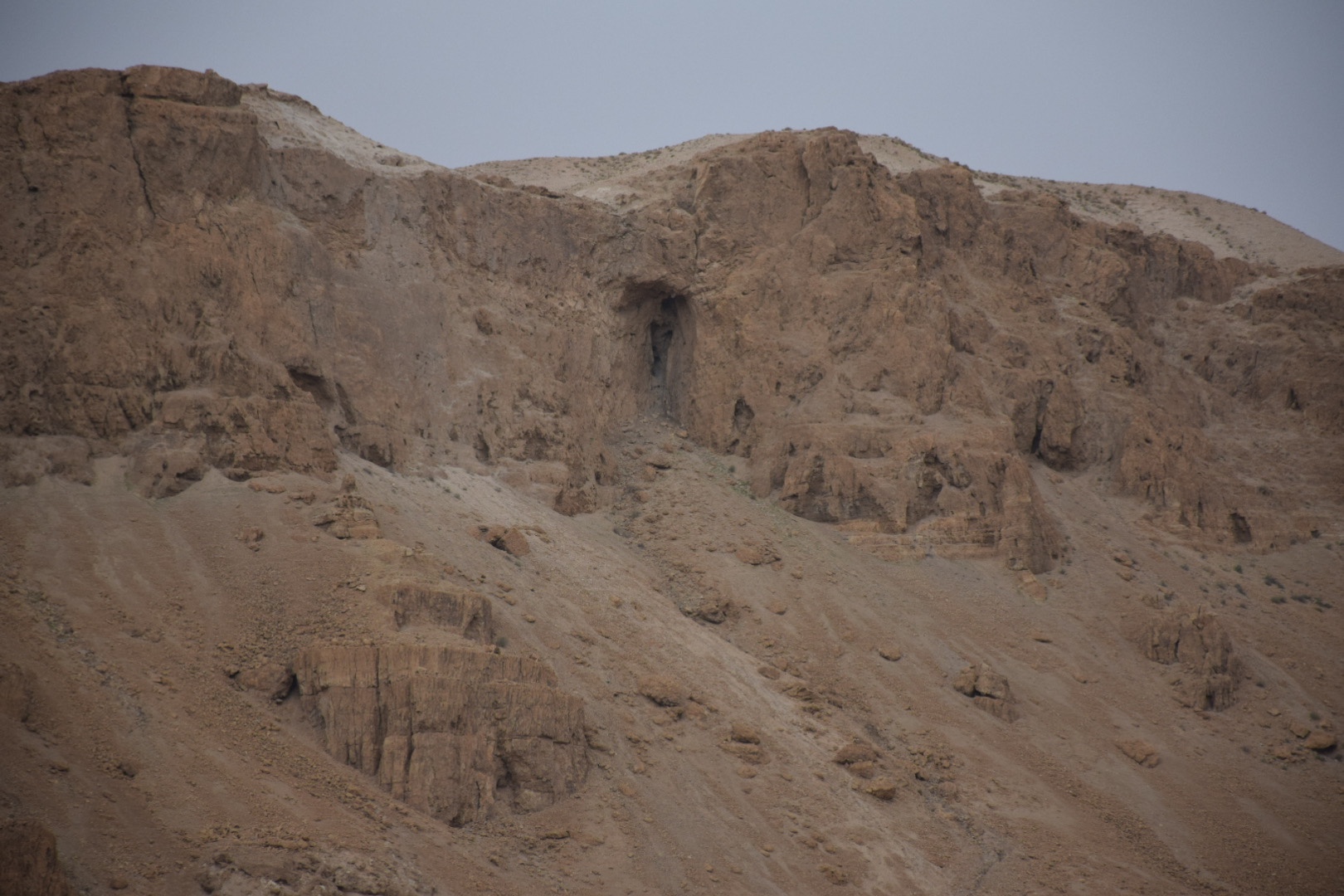
Back outside, Murad showed us “Cave 1” at the top of the mountain where three Bedouin farmers found the first 8 clay jars in 1947. These farmers had no idea what they had found and sold them to a dealer in Jerusalem for $16.
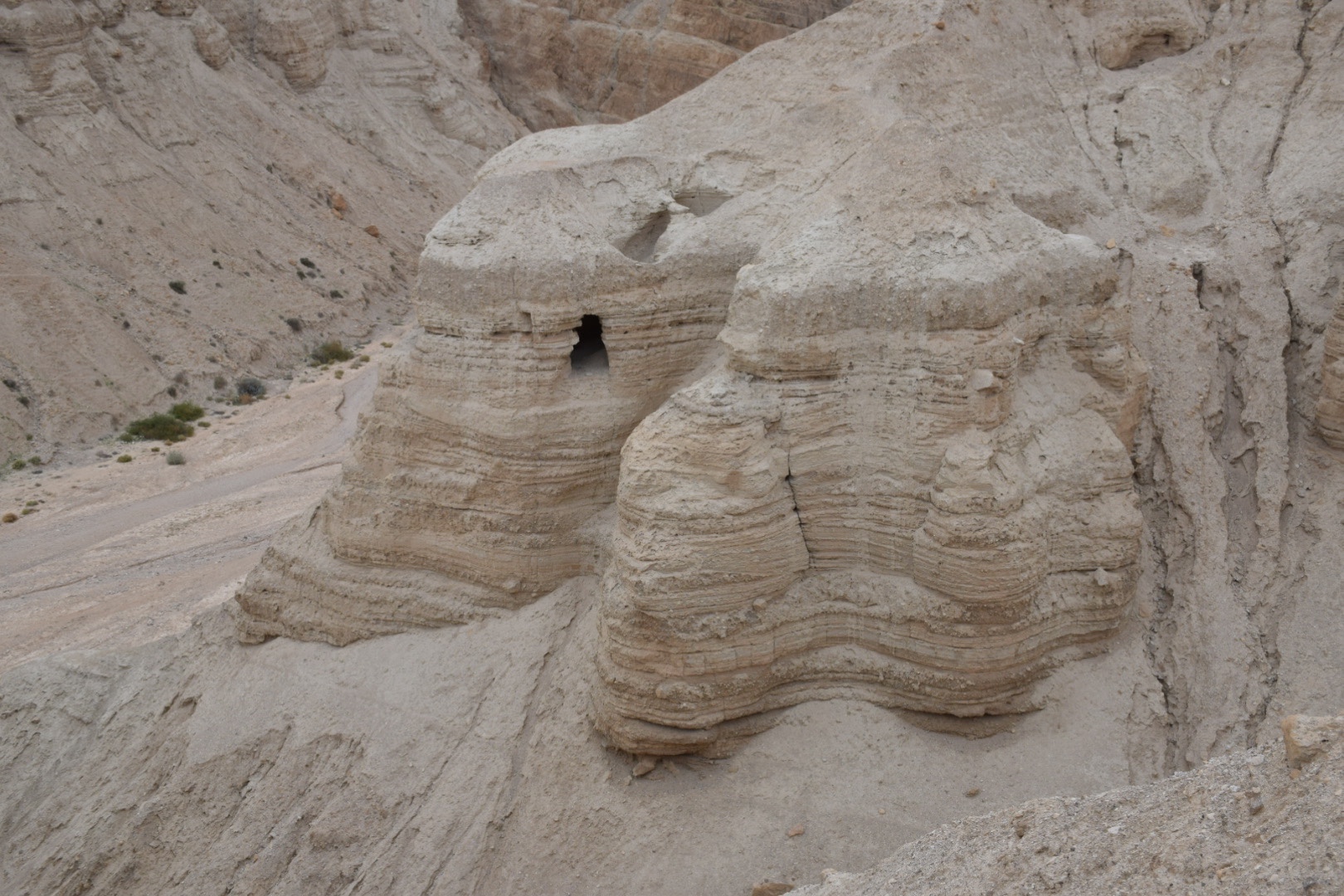
Murad also showed us another cave down in a valley where they later found 15,000 scroll fragments that made up 530 total scrolls.
In addition to the caves, Murad also showed us many excavations from the time of Jesus including:
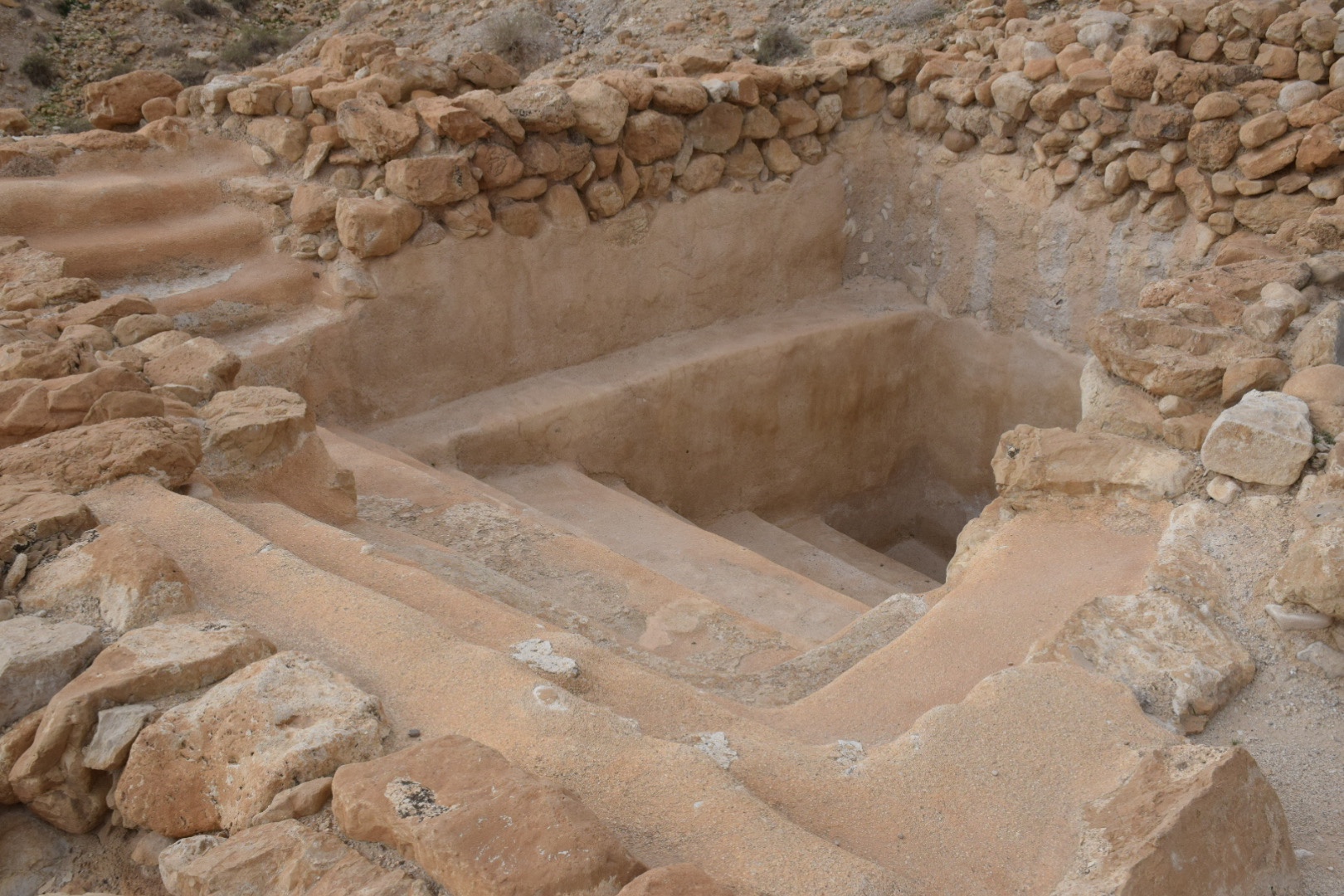
Ritual Baths,
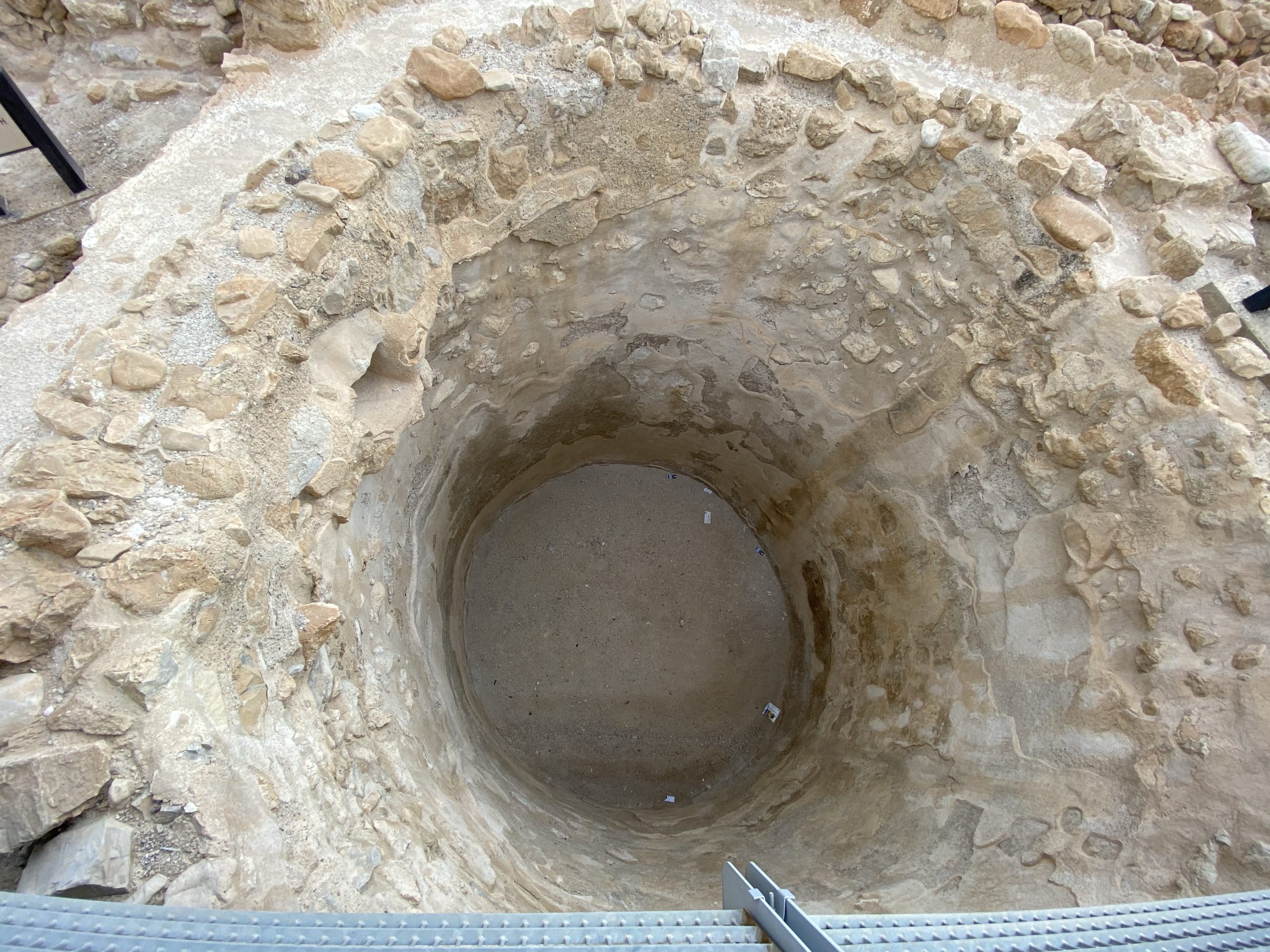
Cisterns,
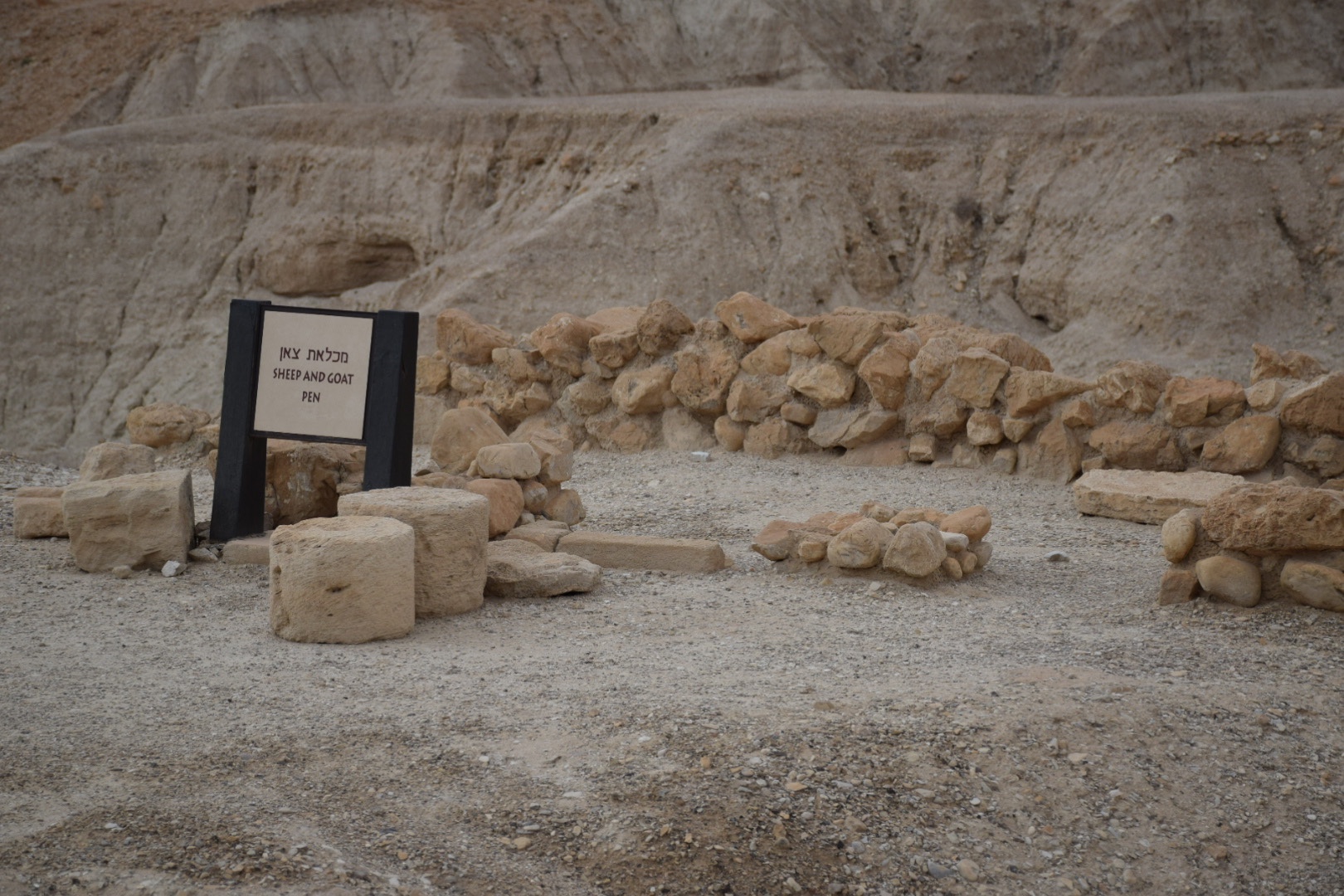
and a sheep pen.
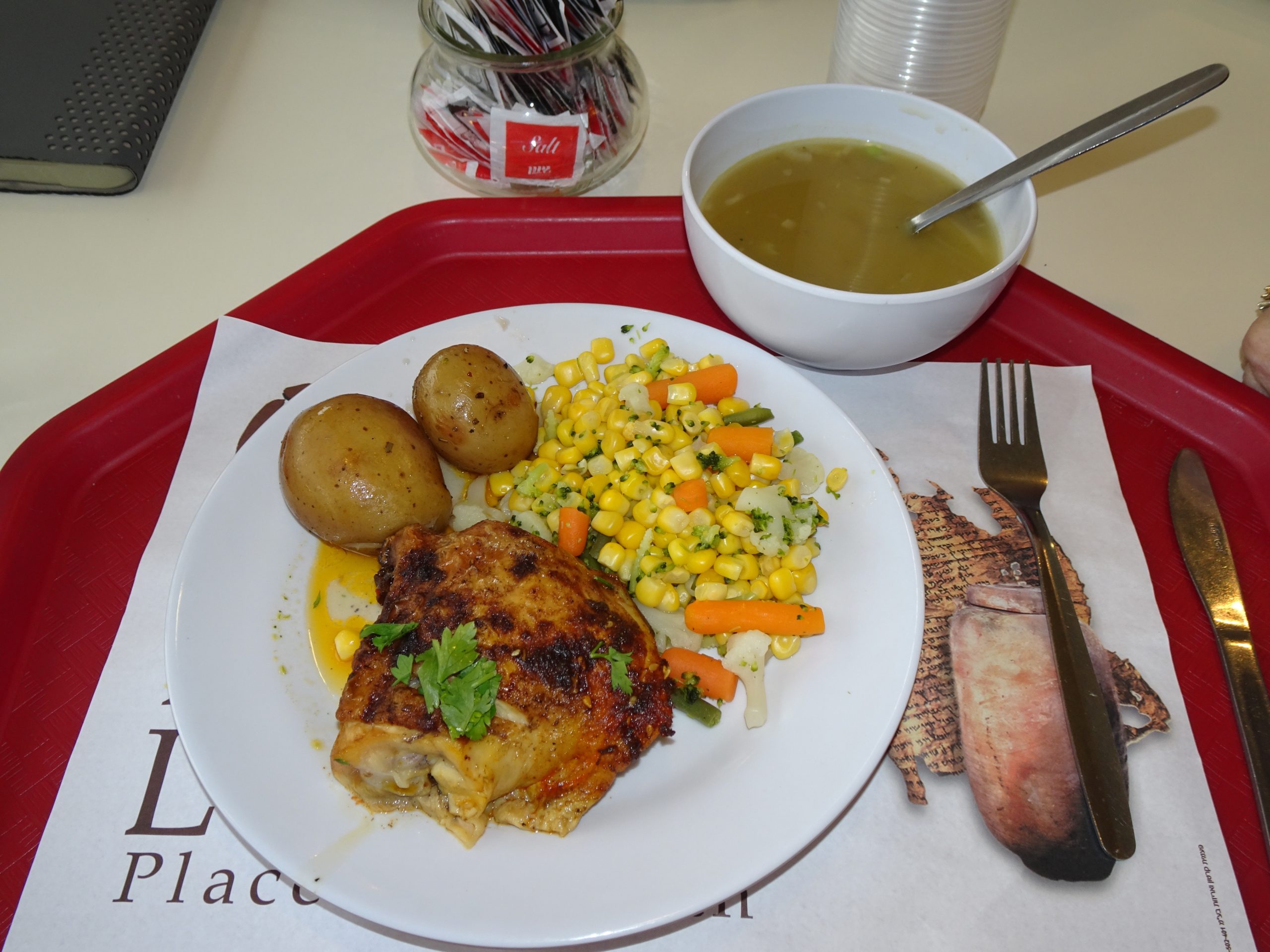
After finishing the tour of the site, we had time for lunch. I had some grilled chicken with mixed vegetables and potatoes. It was really good. Ms. Ione Dupris also gave me a date she had purchased in Jericho, and it was delicious. All along the Jordan River and the Dead Sea you can see rows and rows of palm trees that have been planted to grow dates.
En-Gedi
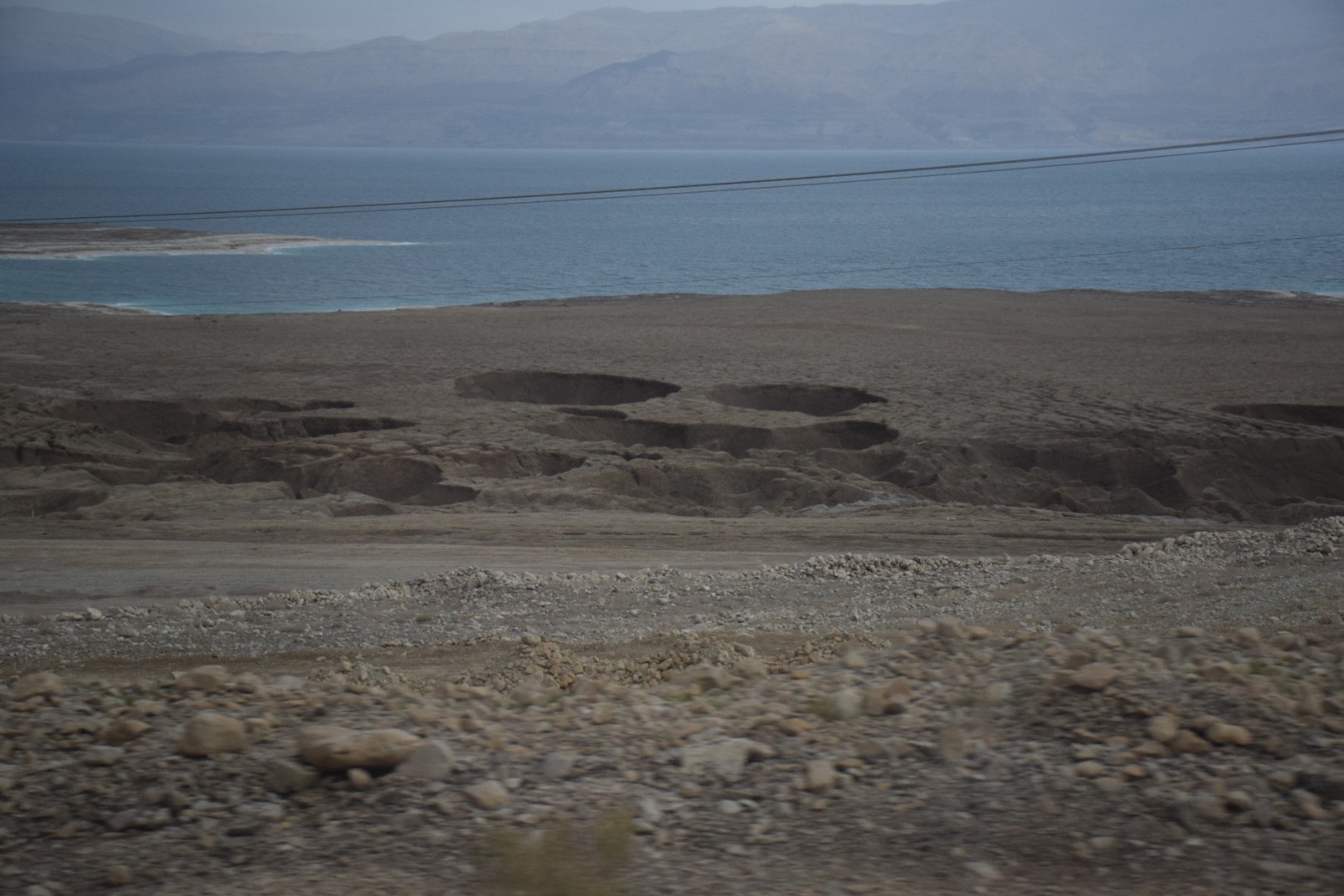
After leaving Qumran, we exited the West Bank through another checkpoint and were then back in Israel. Along the Dead Sea, Murad pointed out several settlements that had been abandoned due to sinkholes. These sinkholes are occurring because of the receding of the water.
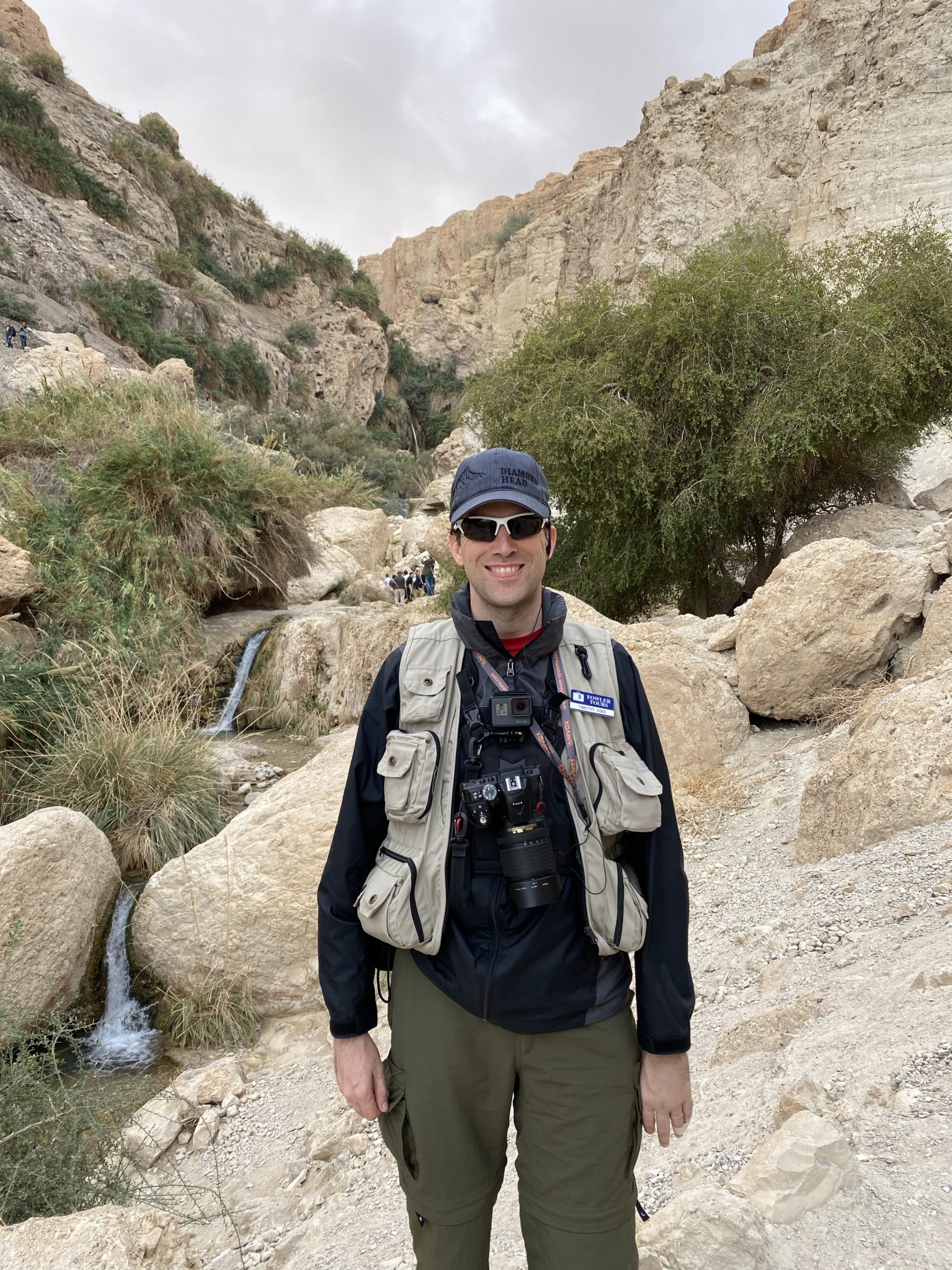
Our final site today was En-Gedi. “En-Gedi” means “spring of the goat” or “spring of the kid.” It gets this name from the freshwater spring located there and from the many wild goats (Ibex) which live in the area. En-Gedi is mentioned numerous times in the Old Testament as detailed below:
*Joshua 15:62 first mentions En-Gedi as the tribal allotment given to Judah as their inheritance.
*When fleeing from Saul, David left his place of refuge in the wilderness and dwelt in the strongholds of En Gedi (1 Sam 23:29).
*In one of the caves there, David cut off the corner of Saul’s robe when he had entered to “relieve himself” (1 Samuel 24).
*In Second Samuel 22, David sings a song of praise to God for delivering him from Saul and in verse 2 calls God his rock, stronghold, and deliverer.
*The Song of Solomon (Song 1:14) describes En Gedi as a vineyard (“fruitful of oasis”) when talking about his beloved.
*Second Chronicles 20:1–2 says that in the reign of Jehoshaphat (800 BC) during the Divided Monarchy, an army of Moabites and Ammonites camped at En-Gedi in preparation to invade Israel.
*Ezekiel 47:10 prophesies a time when fresh waters will flow from the Temple in Jerusalem down to the Dead Sea and make the Dead Sea fresh: “From Engedi to Eneglaim it will be a place for the spreading of nets” (Ezek 47:10).
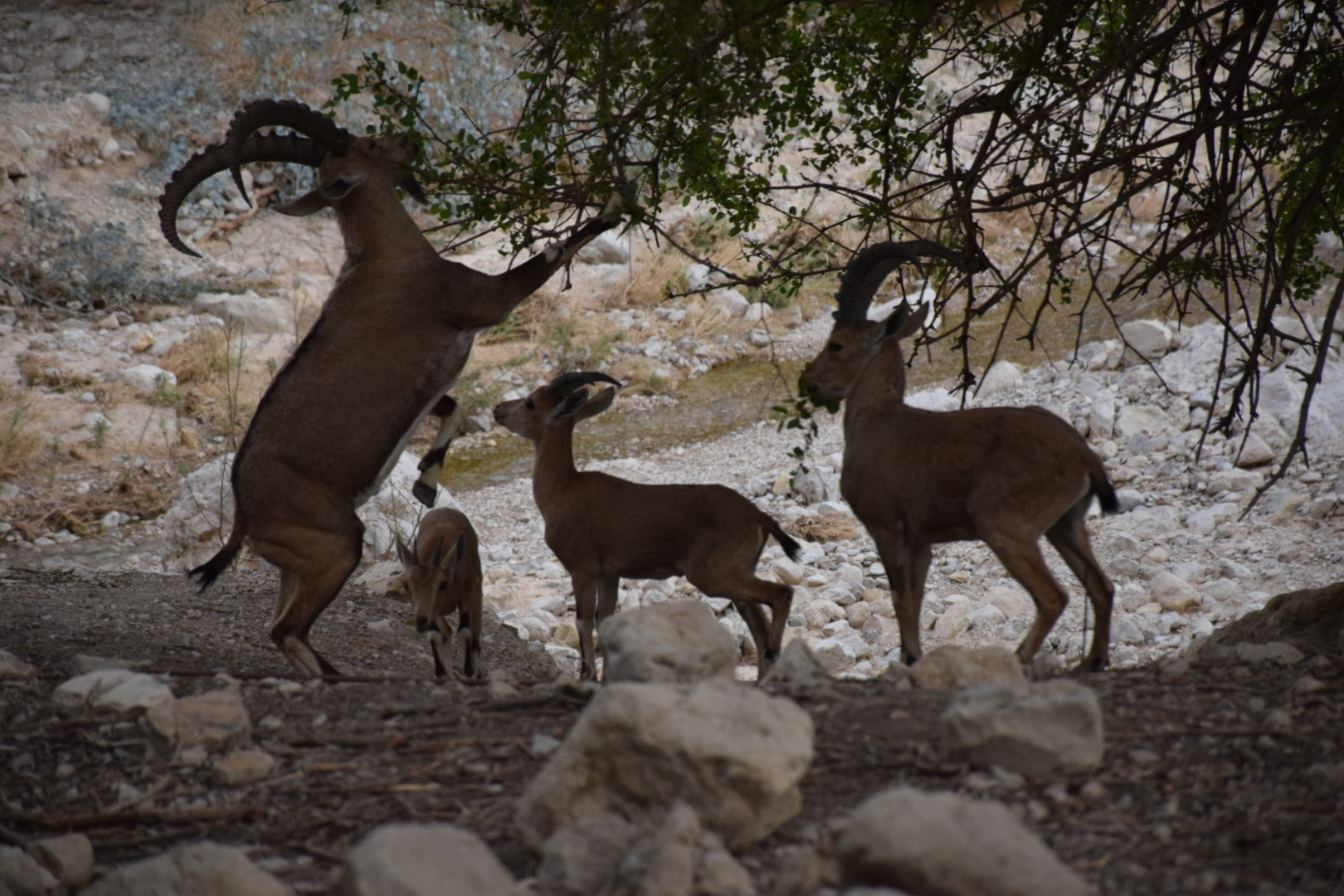
We got out of the bus, and I immediately noticed how much warmer it was than at Qumran even though it was relatively close. En-Gedi is beautiful! Easily one of my favorite sites of the trip. At the site, Murad and Ami led both groups along a path and then up into the mountains where we would all meet together. The hike up into the mountains was fairly strenuous, and not everyone was able to make it. After entering the site, we immediately saw a number of Ibex (wild goats) alone the path for which the site is partially named.
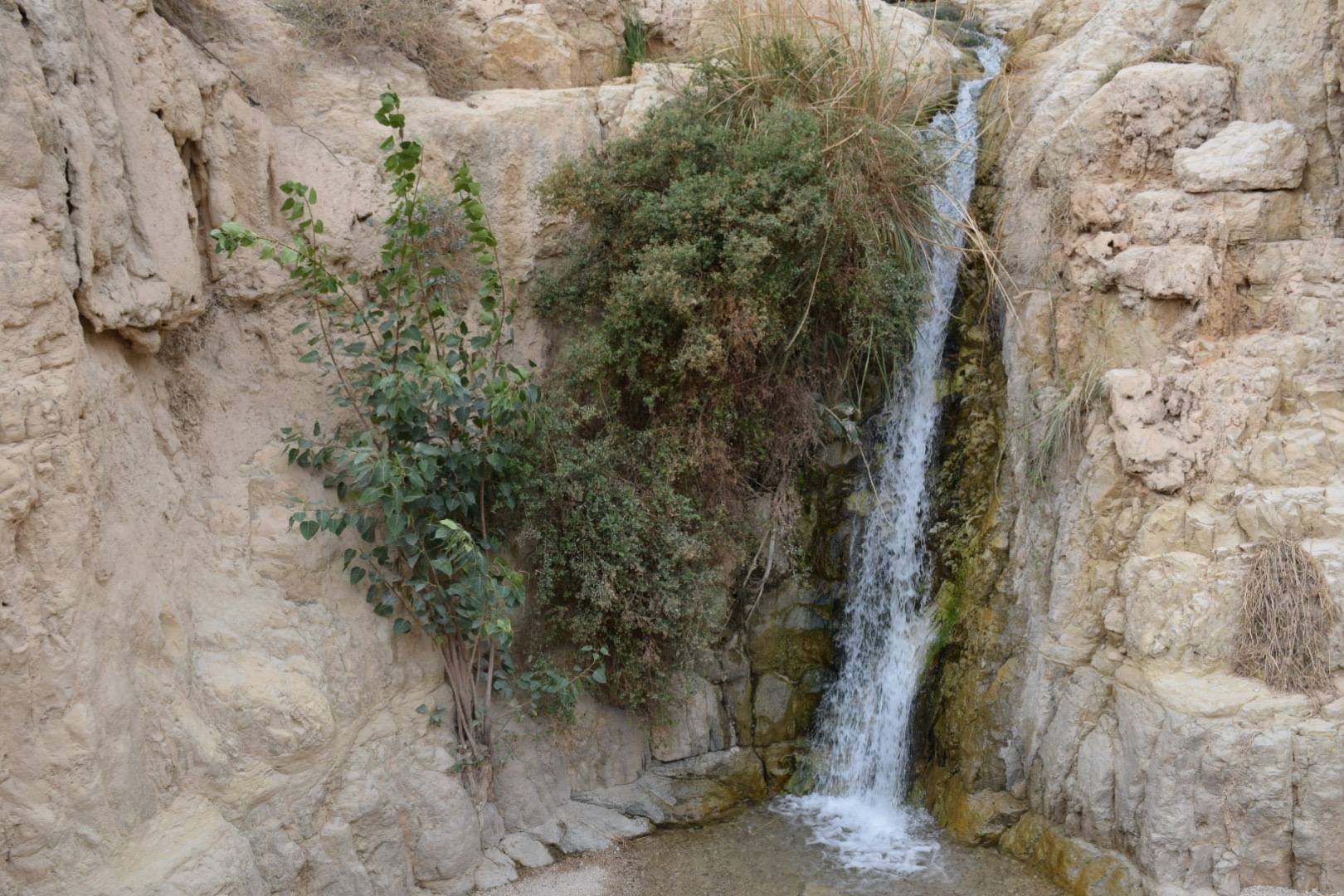
Along the way we also saw a lower and upper waterfall.
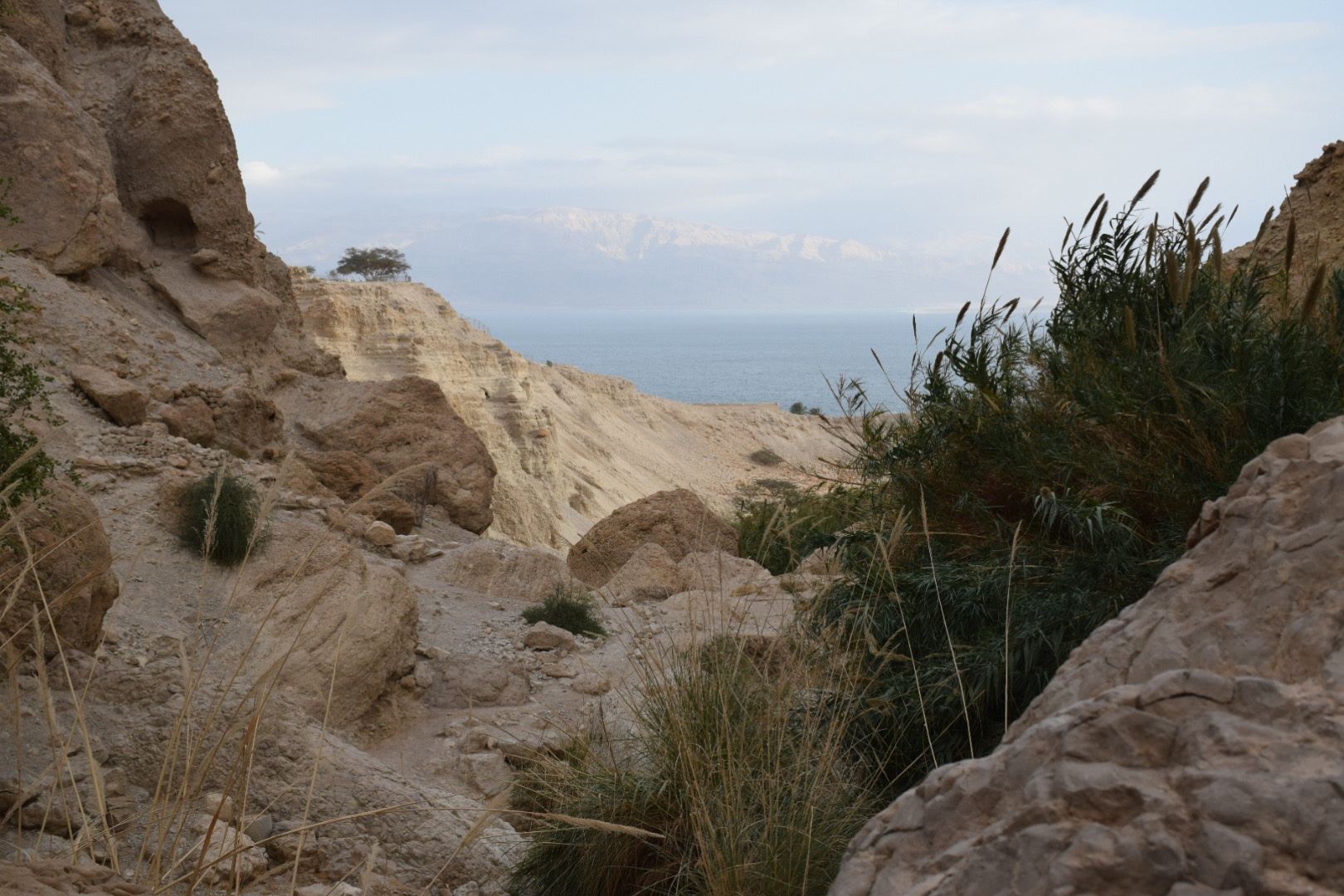
At the top, the views of the Dead Sea were stunning.
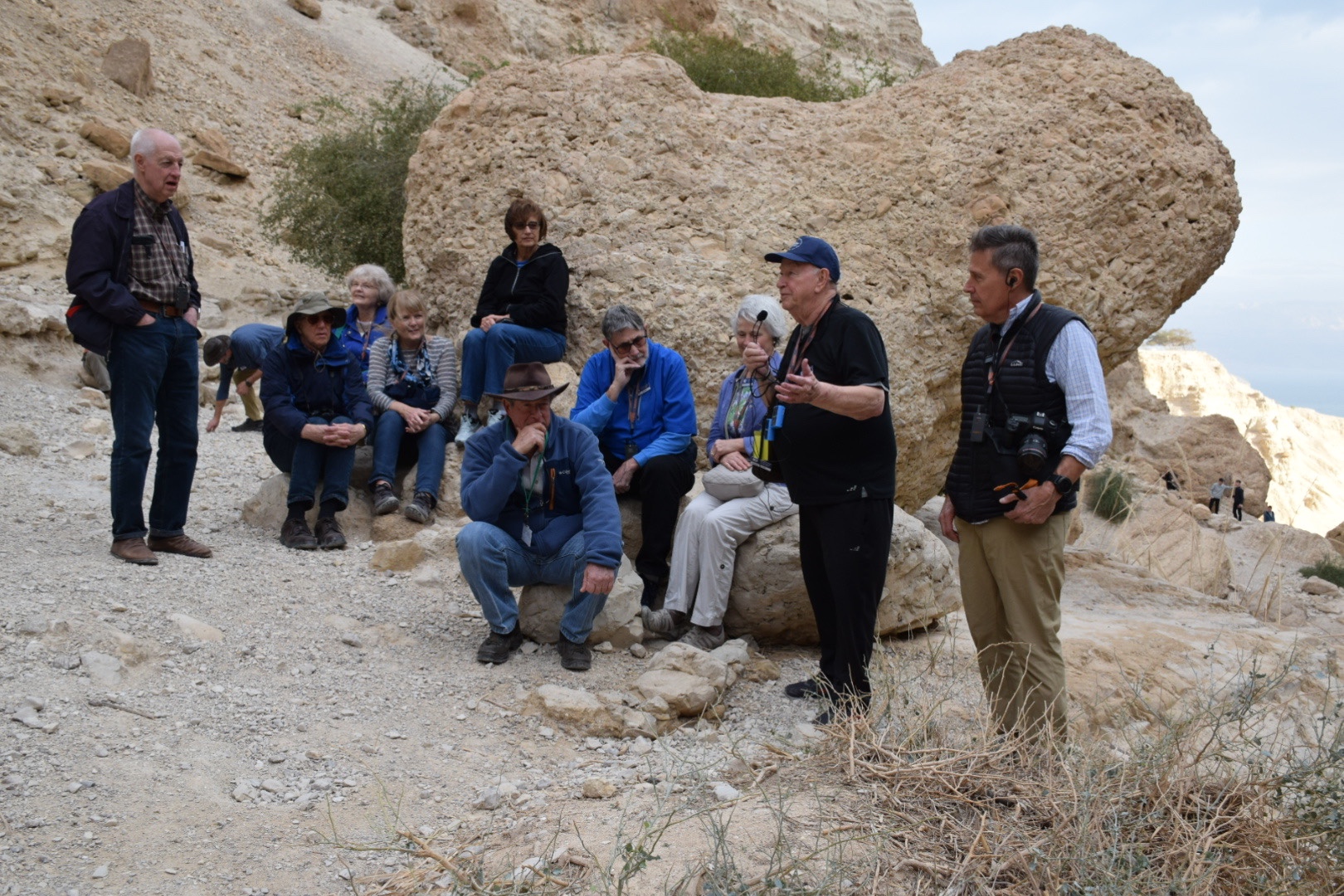
Dr. Cloud addressed the group and talked about the name “En-Gedi,” the reference to En-Gedi in Song of Solomon, and the story of David hiding from Saul and cutting off part of his robe. It was obvious how much this site means to him, and it makes sense because of his love for the story of David. It was crazy to think about the fact that we were standing in the same place where that event between Saul and David occurred.
We hiked back down to the bottom, and then it began raining as we were leaving. Dr. Cloud told us that this was the first time in his 21 trips that it had rained on him at the Dead Sea. I have to believe that most of the 1/2 inch per year fell today.
Dead Sea Hotel
By the time we reached the Dead Sea Hotel right on the bank of the Dead Sea, it was starting to get dark, so they decided to delay our leaving tomorrow by 1.5 hours so we can have an opportunity to swim (float) in the Dead Sea before we leave. We will only be staying at this hotel for one night before heading to Jerusalem tomorrow.
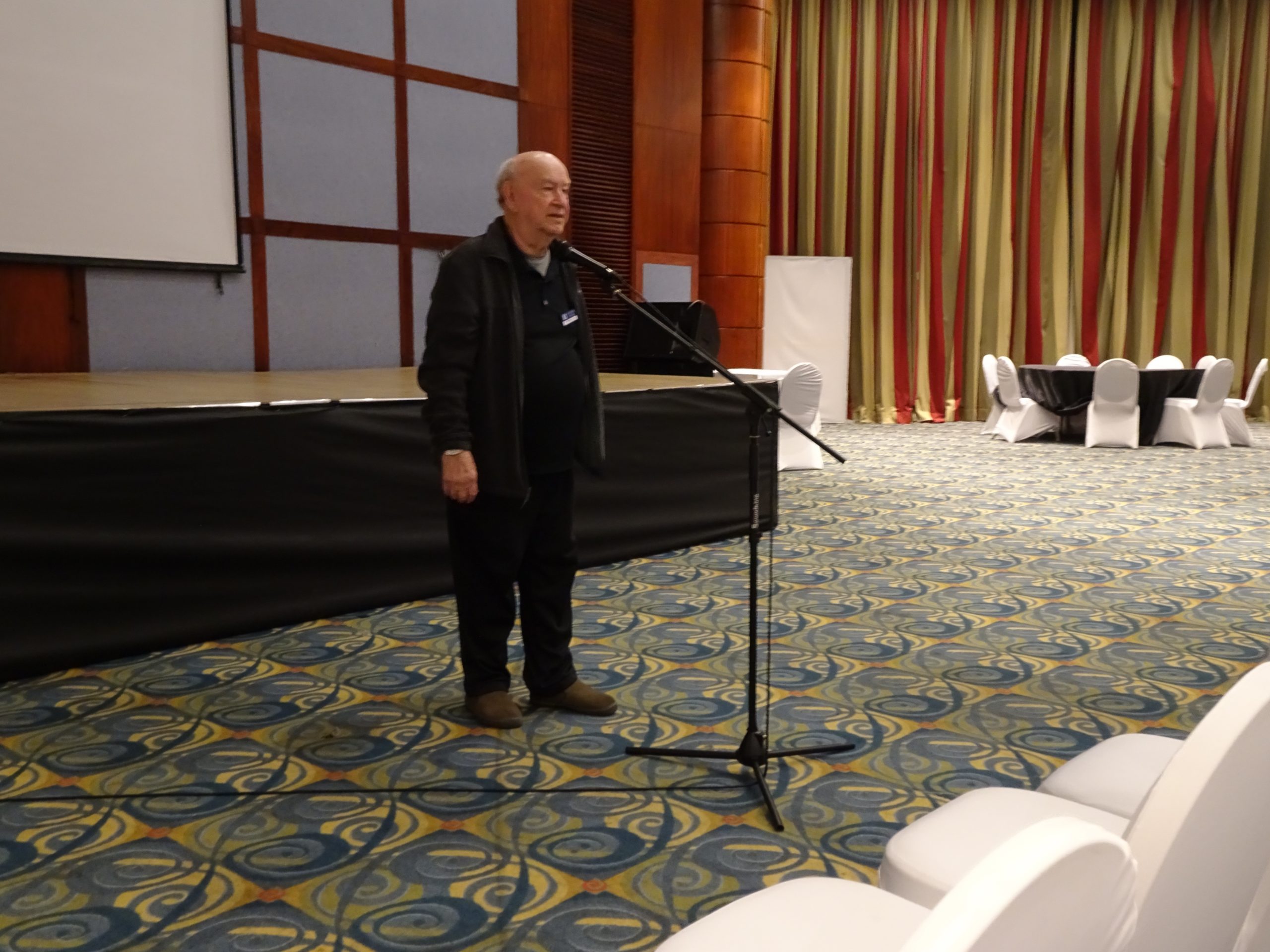
After getting checked in we had a wonderful buffet dinner in the hotel and then met at 8pm for a meeting. Doing the meeting, Dr. Cloud talked to us about how to select a Bible translation, which included an extensive history of Bible translations.
I was able to talk to Olivia and Sara back home for a few minutes and now I’m about ready to hit the bed. Tomorrow we head toward Jerusalem with a stop in Masada.
